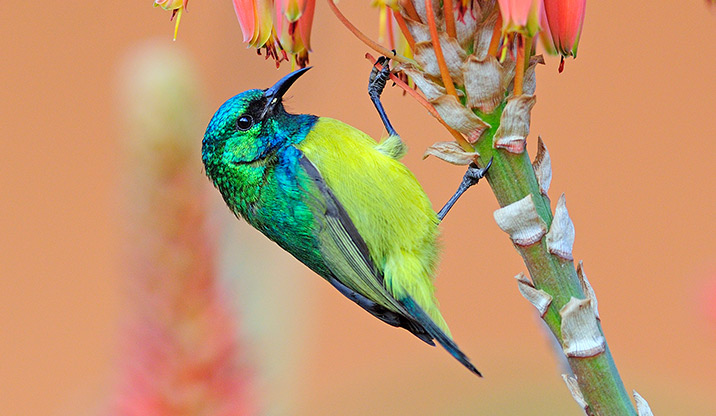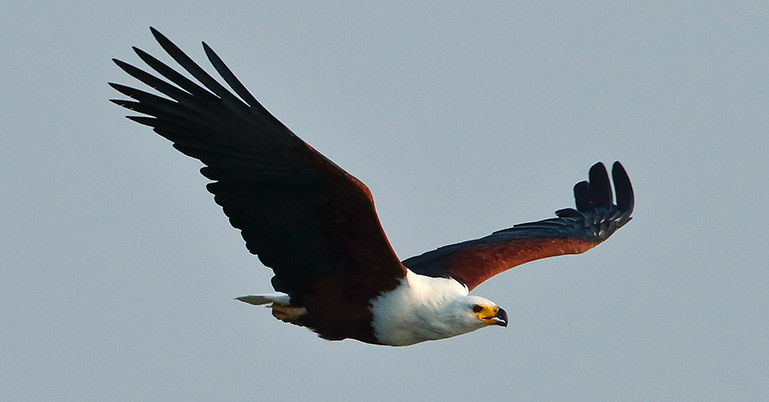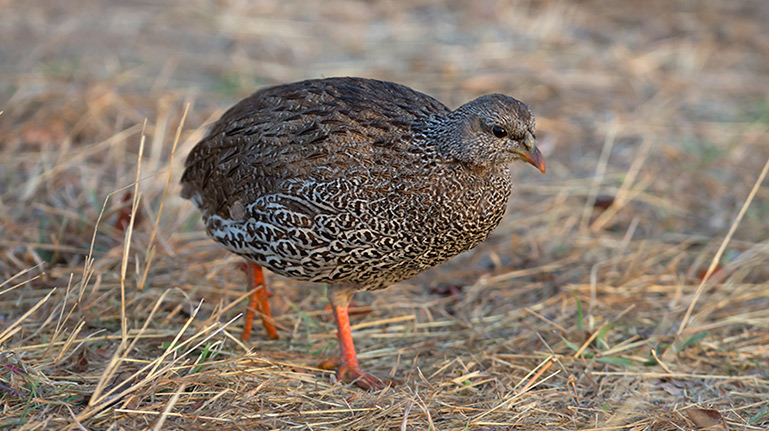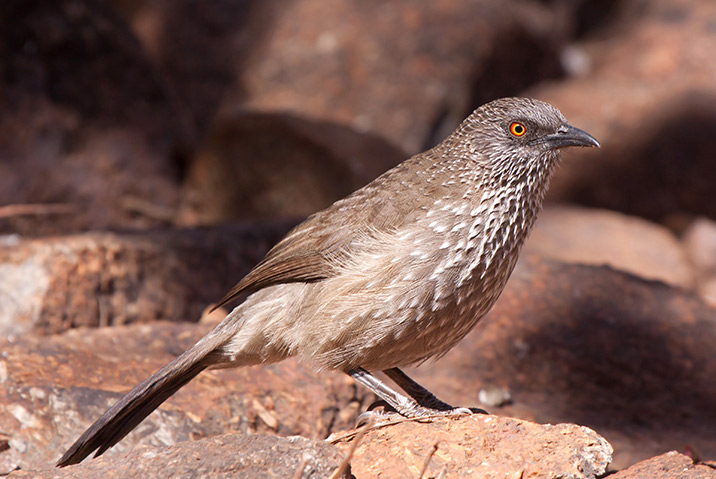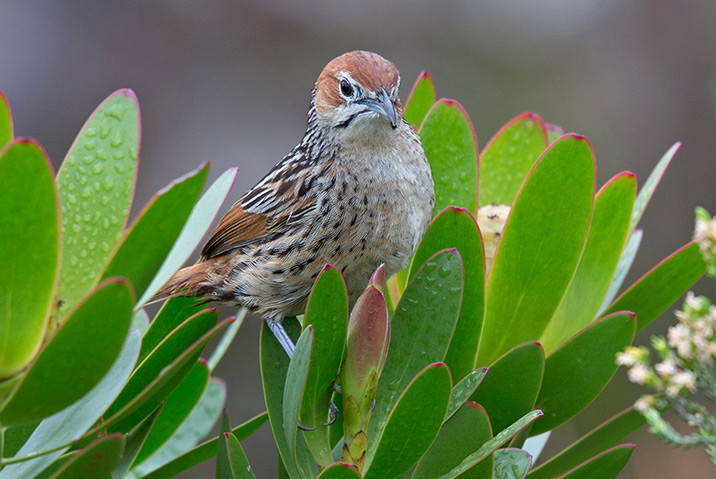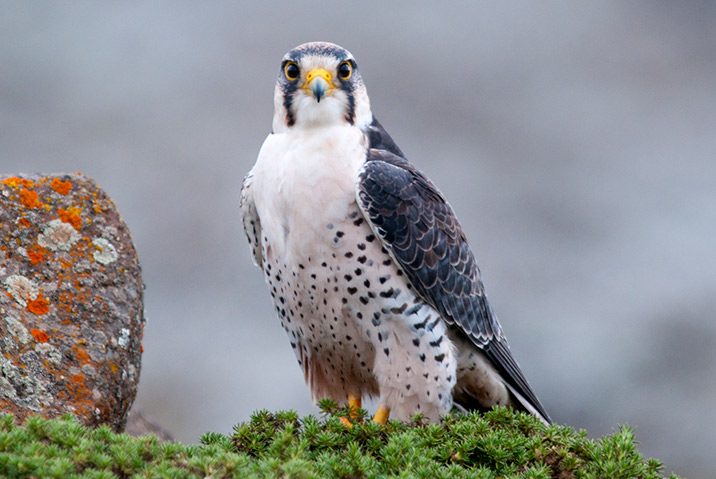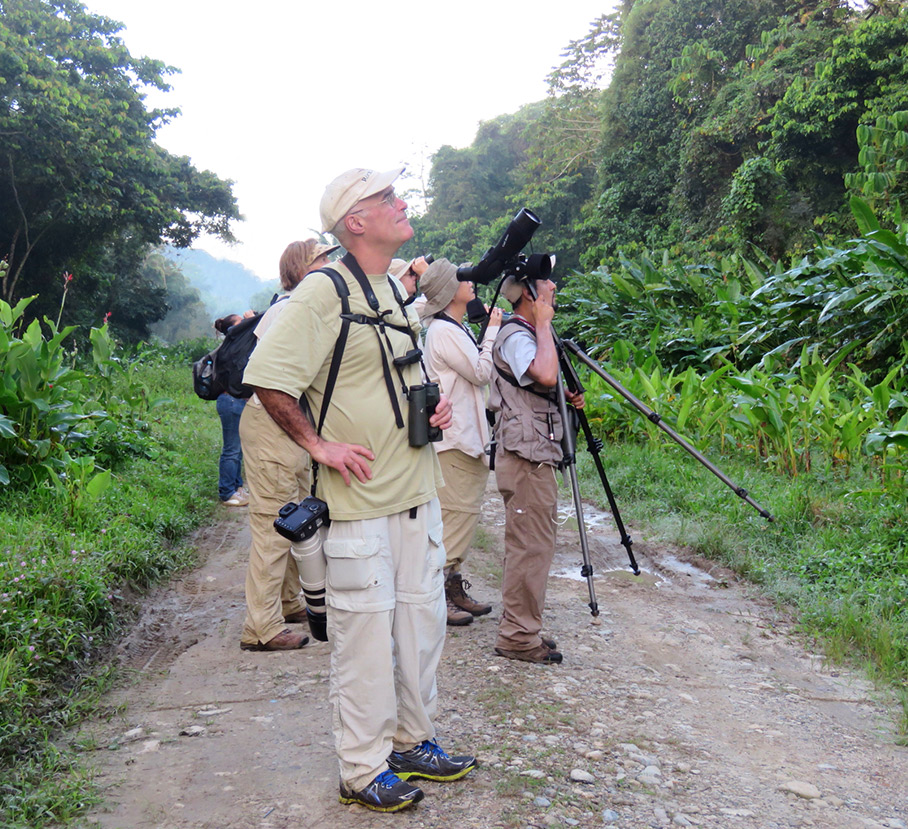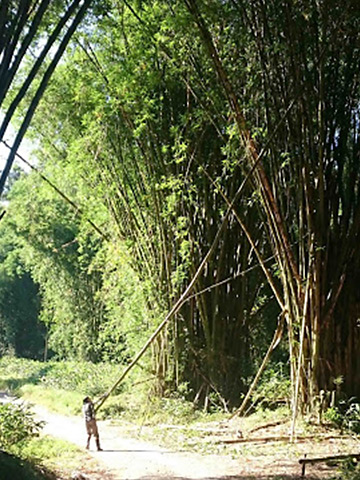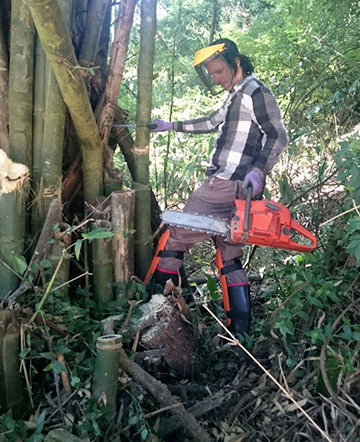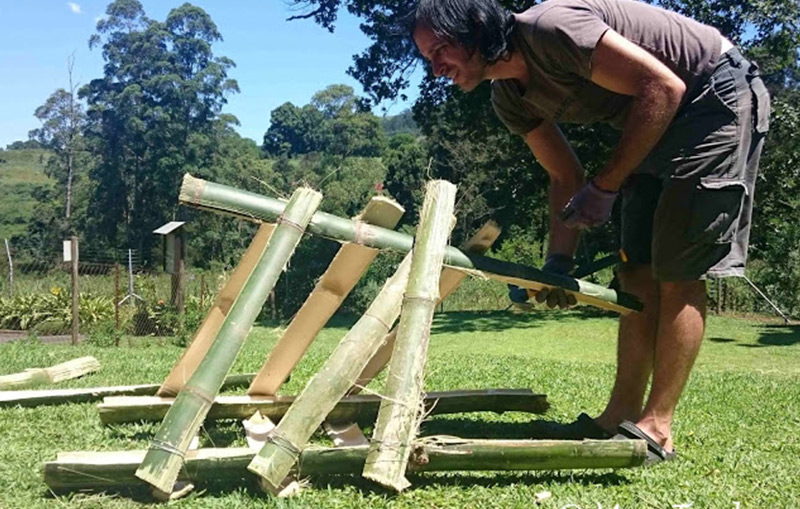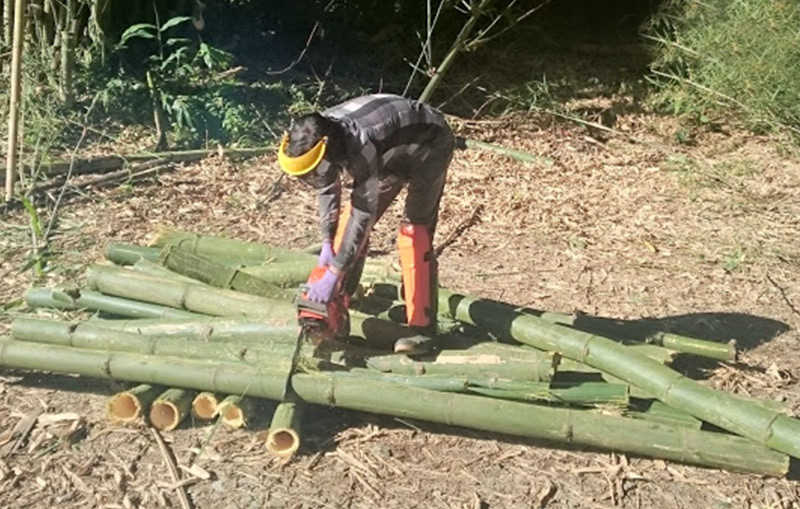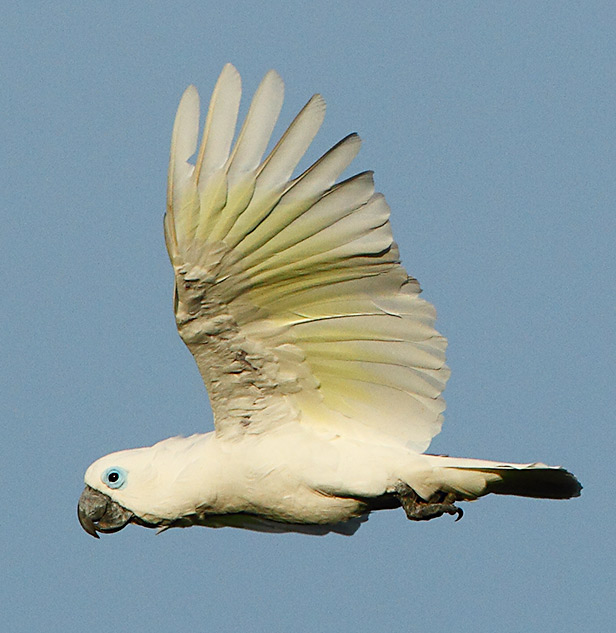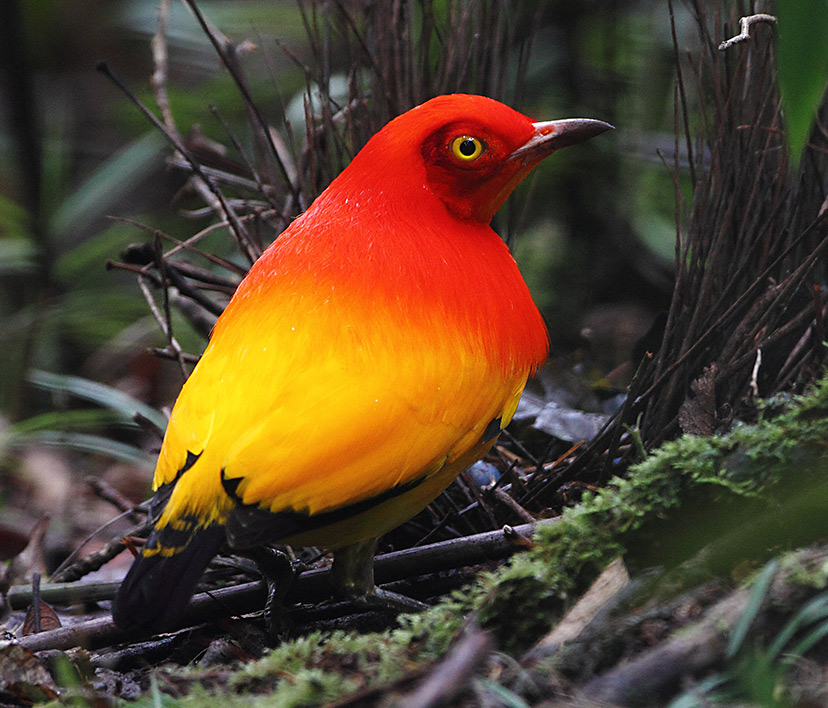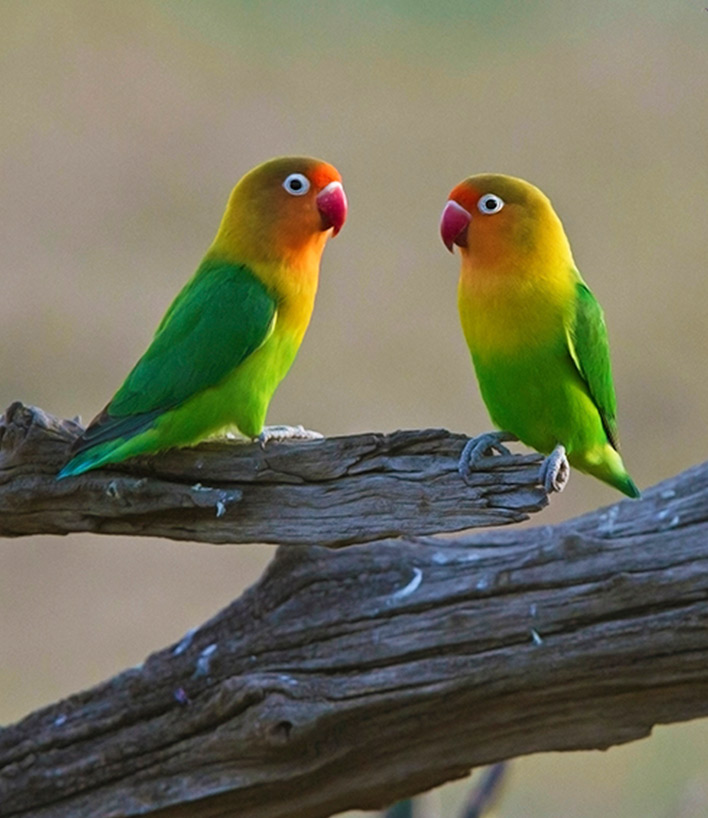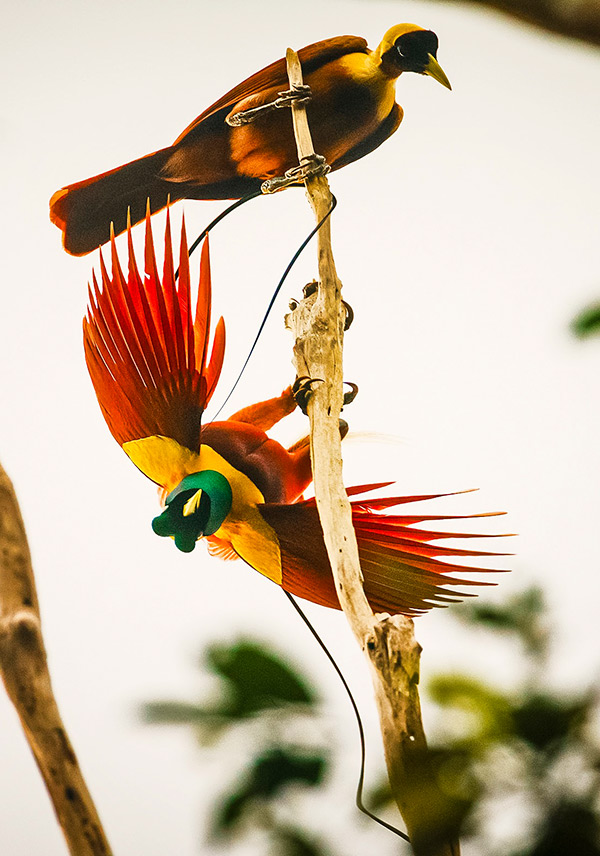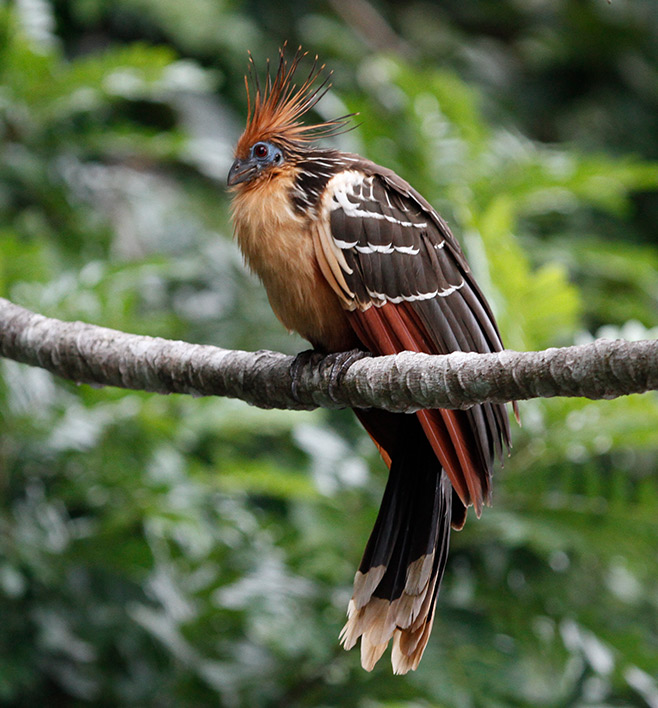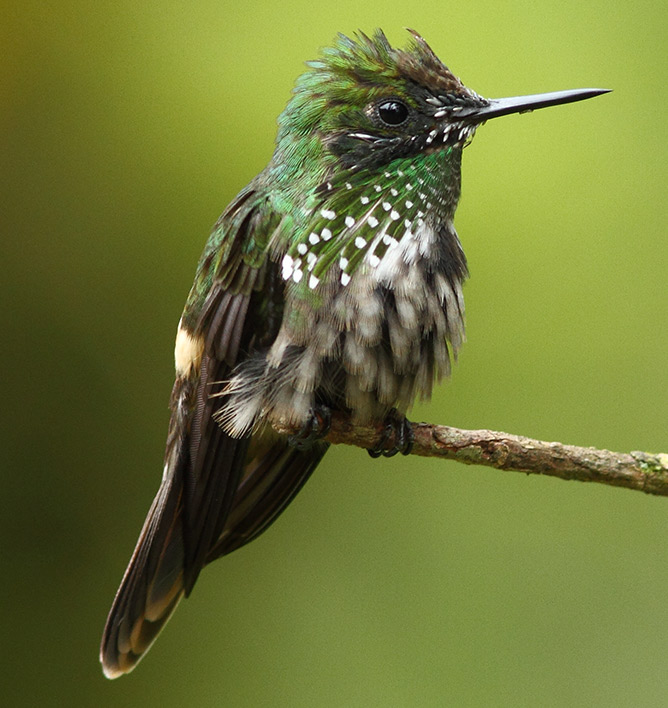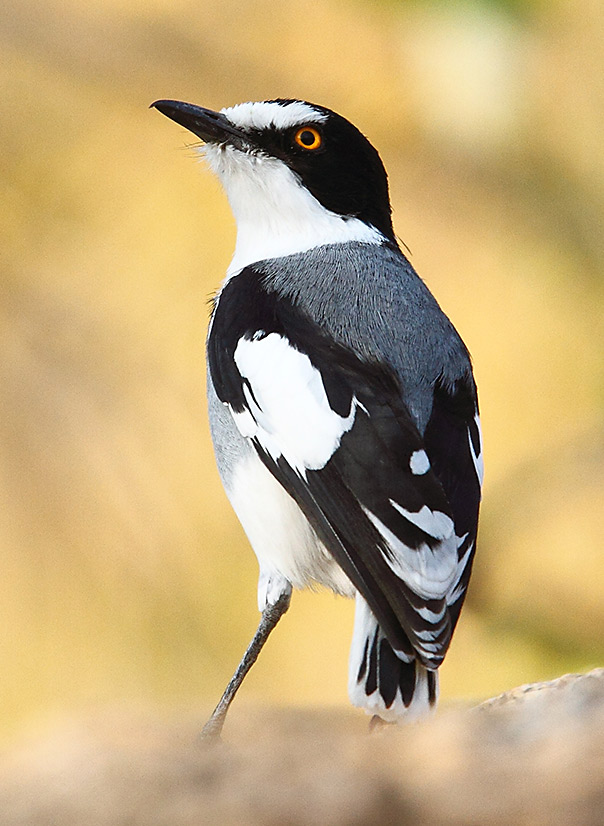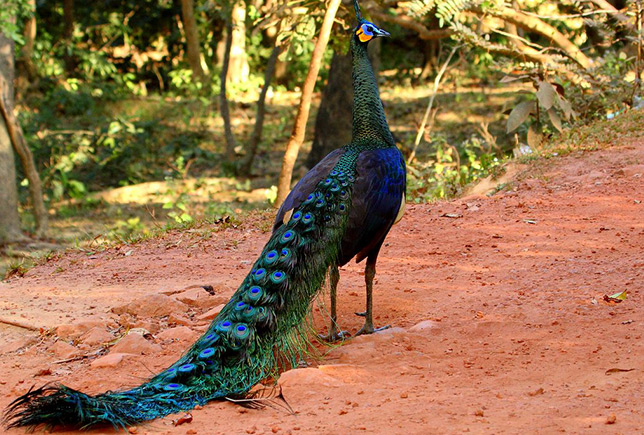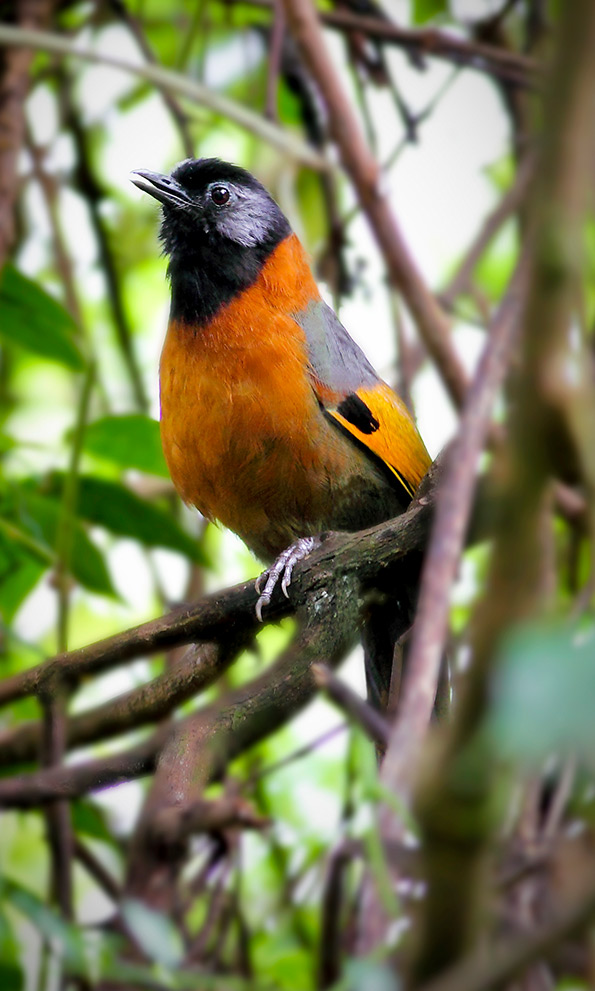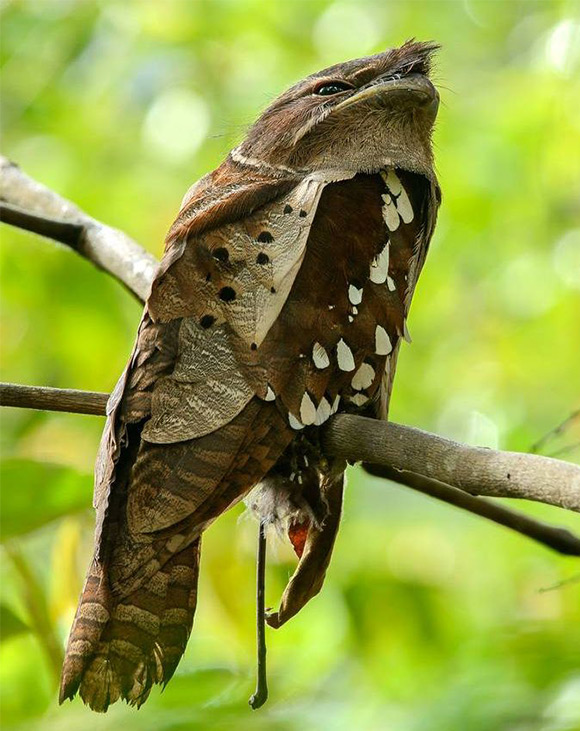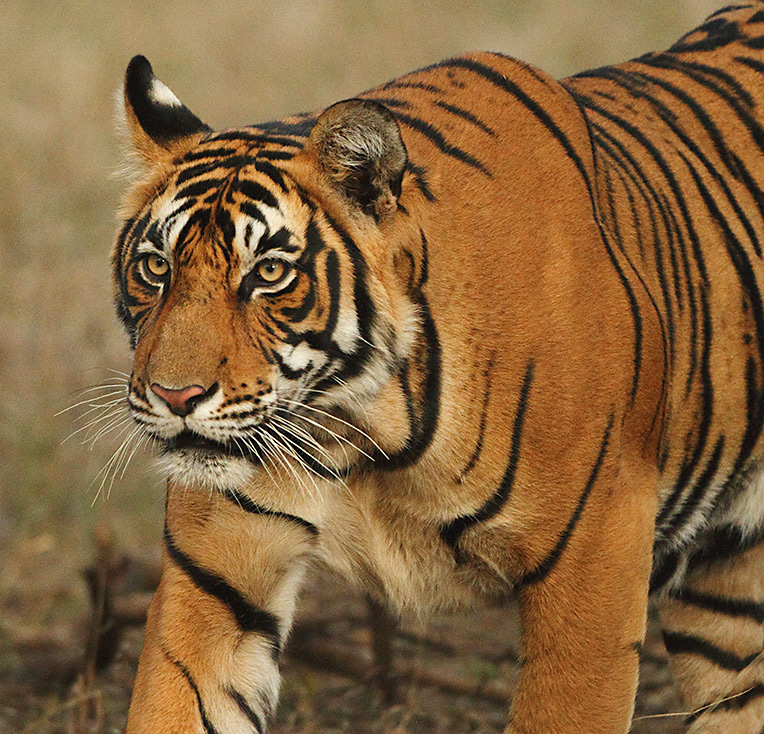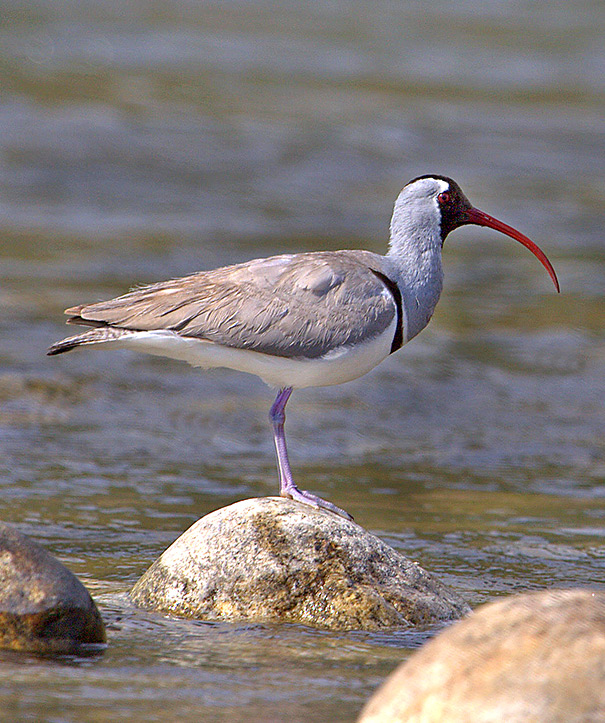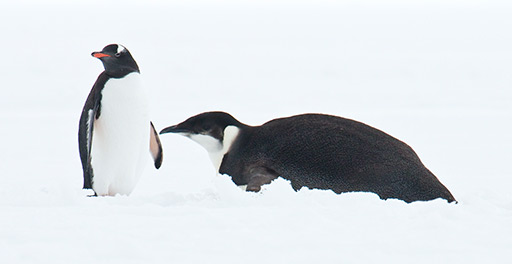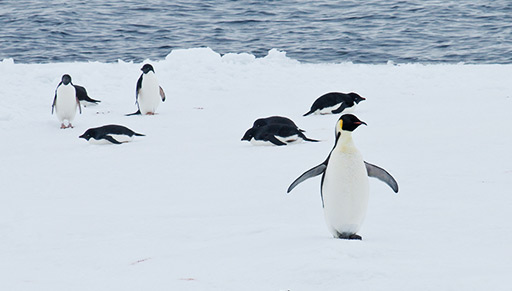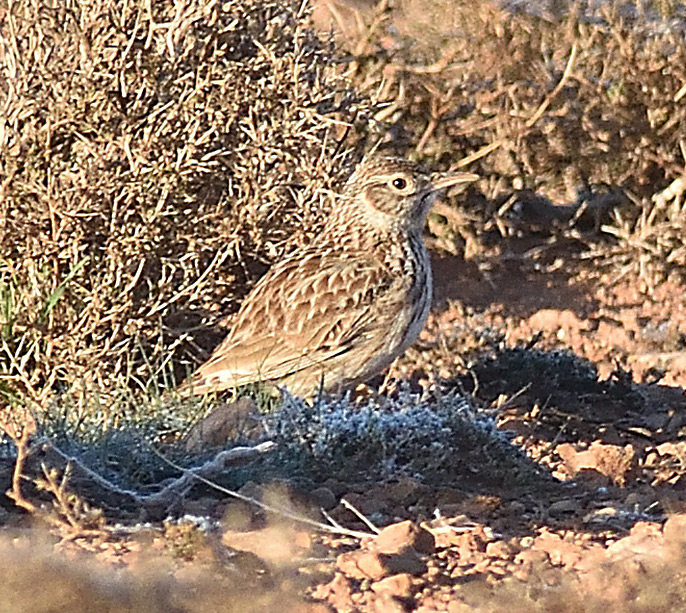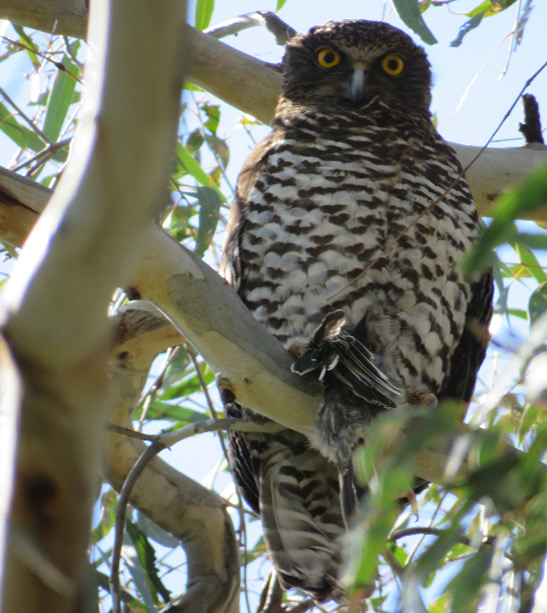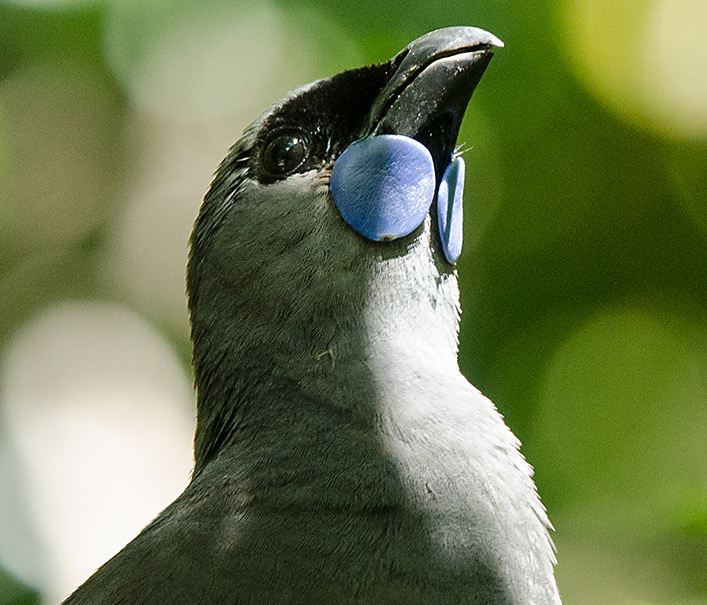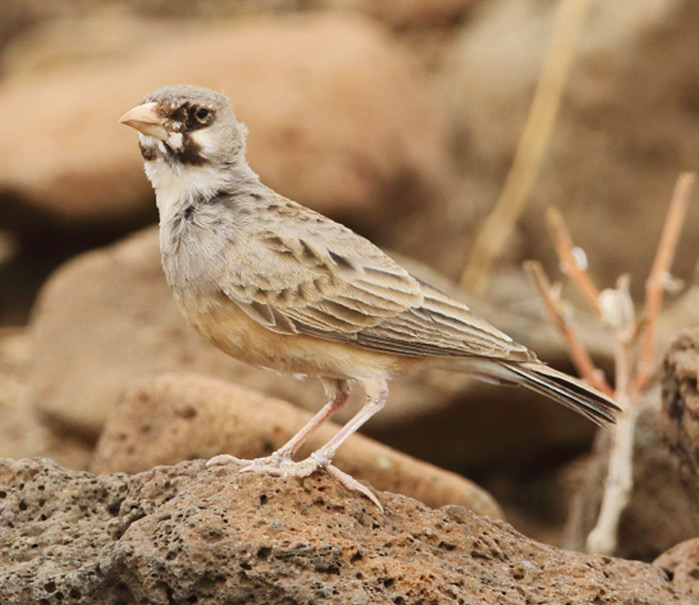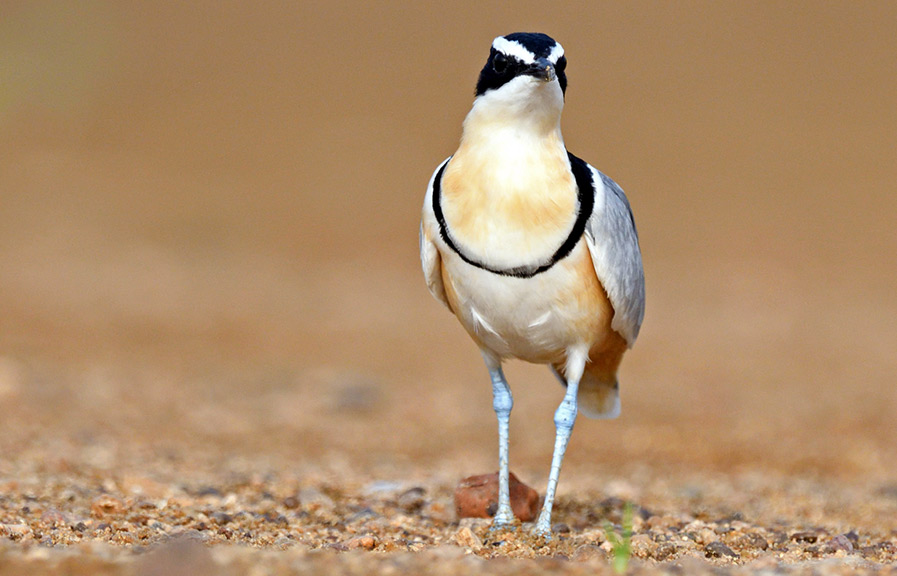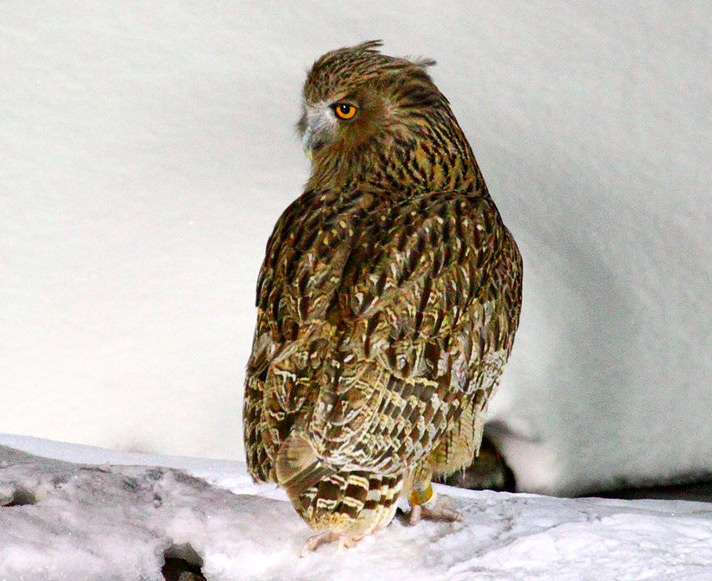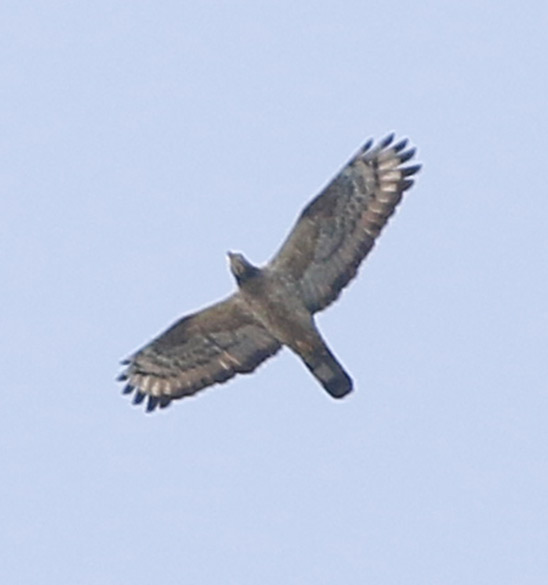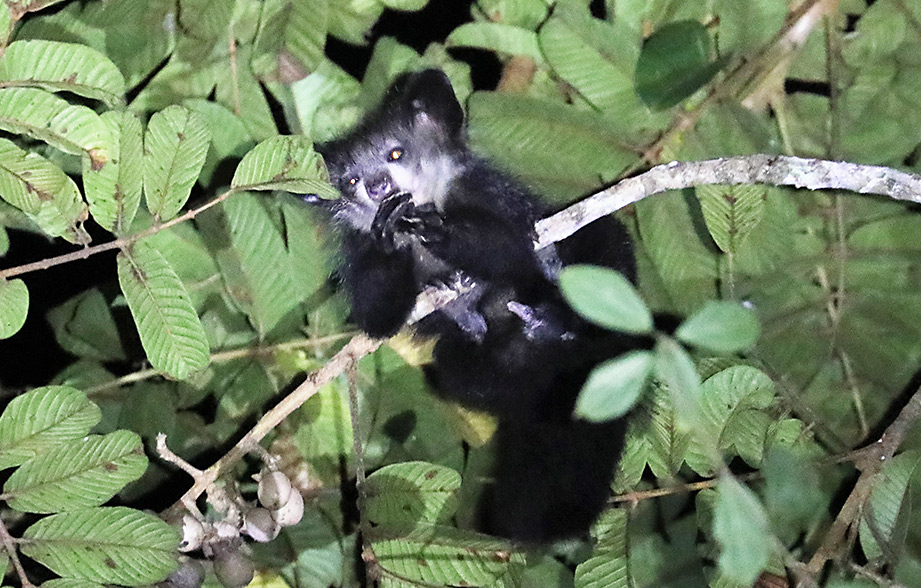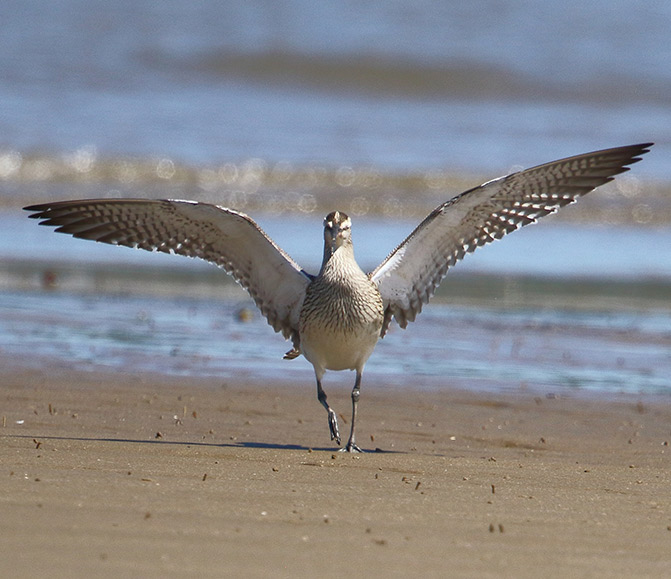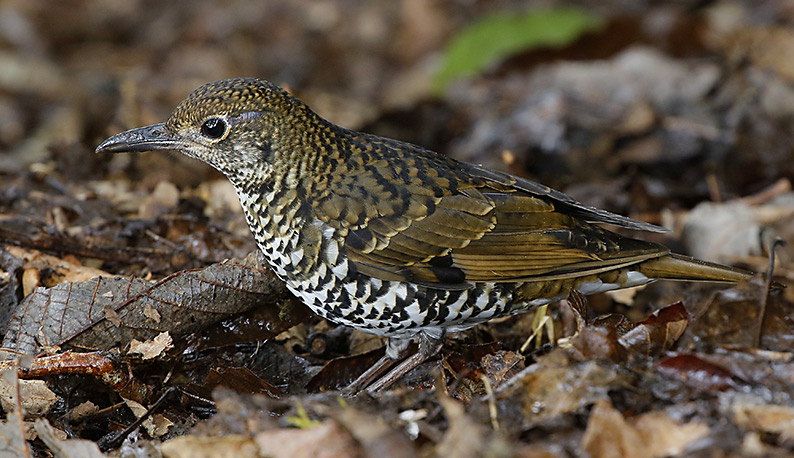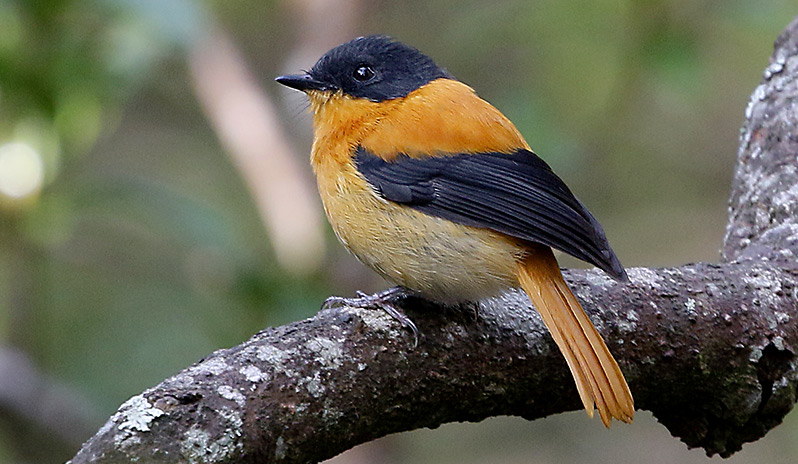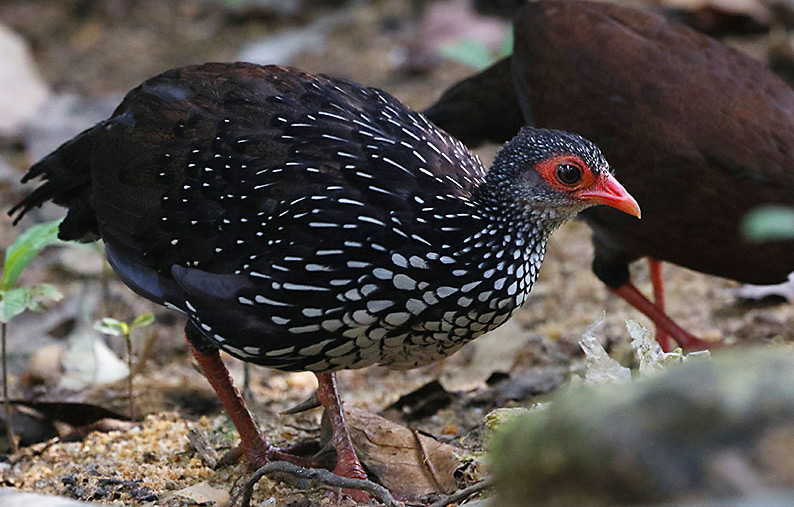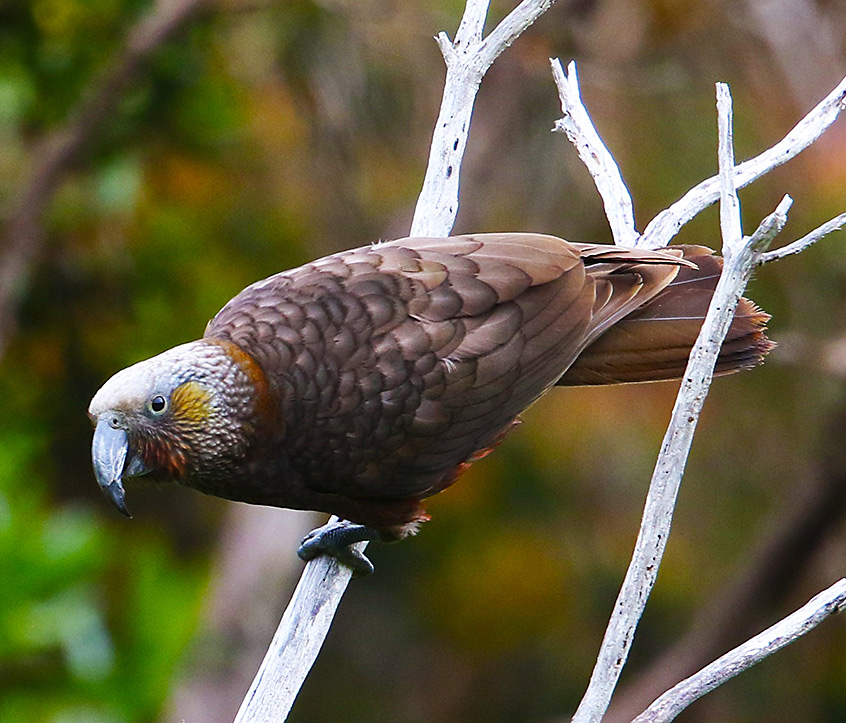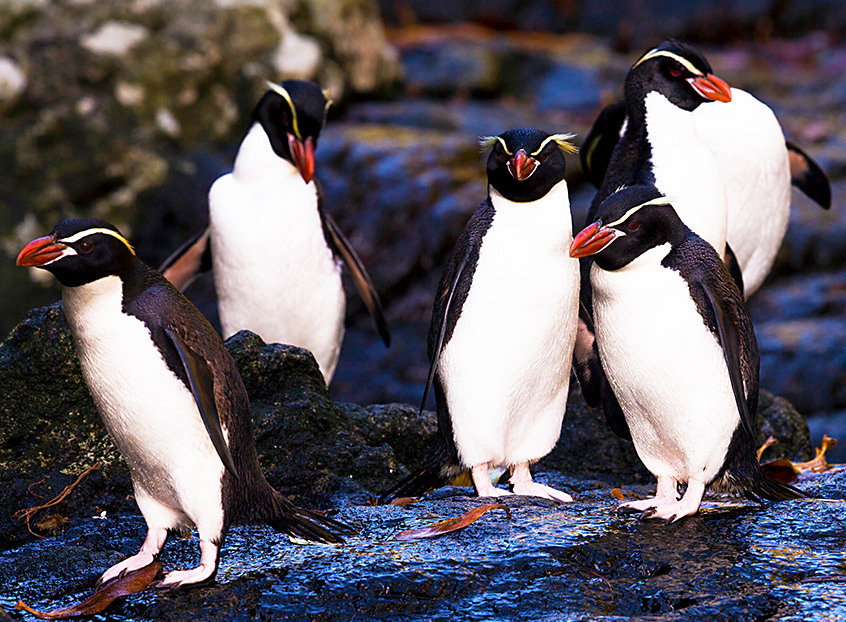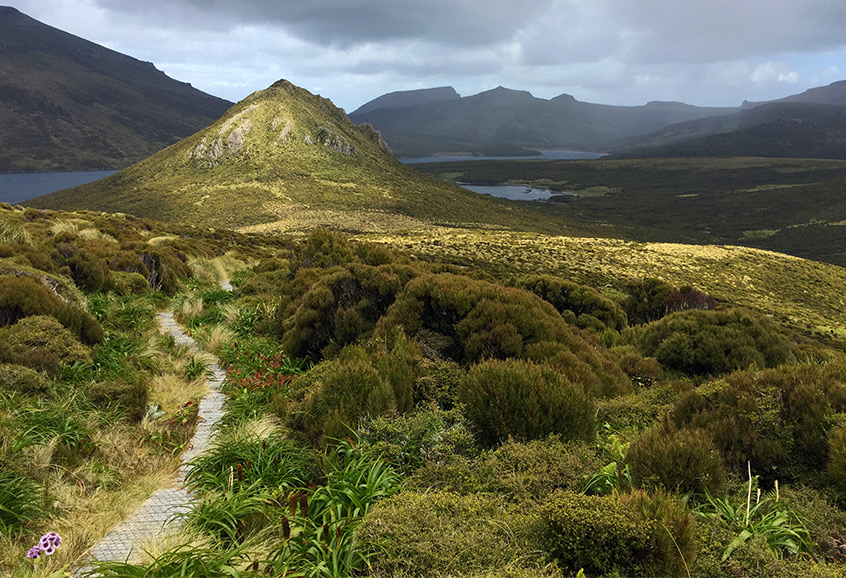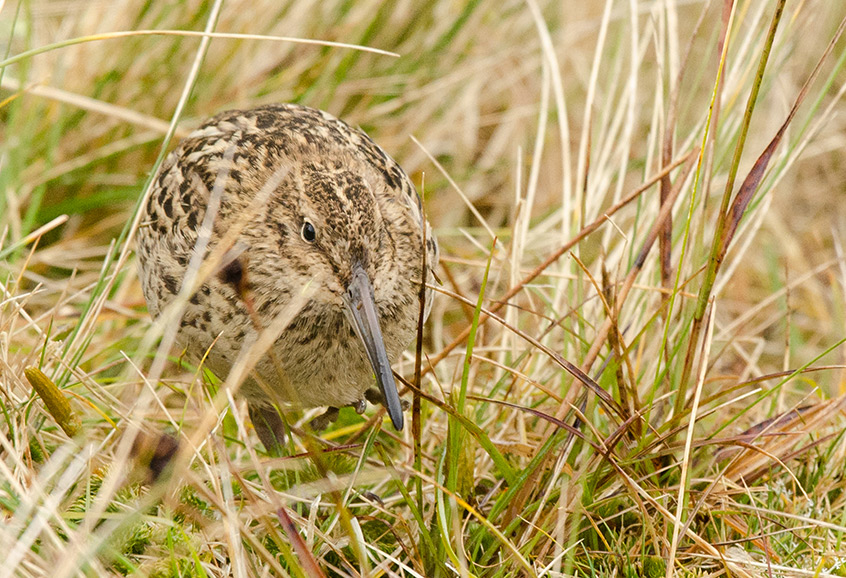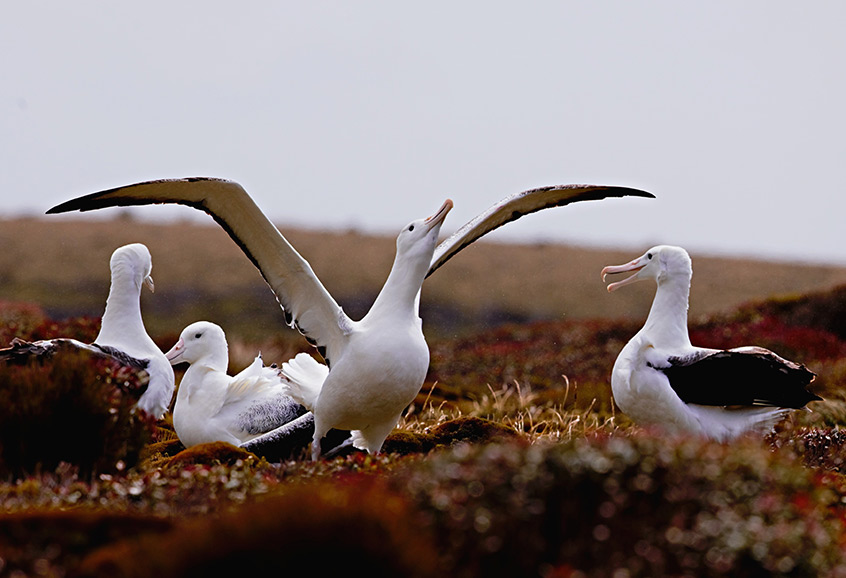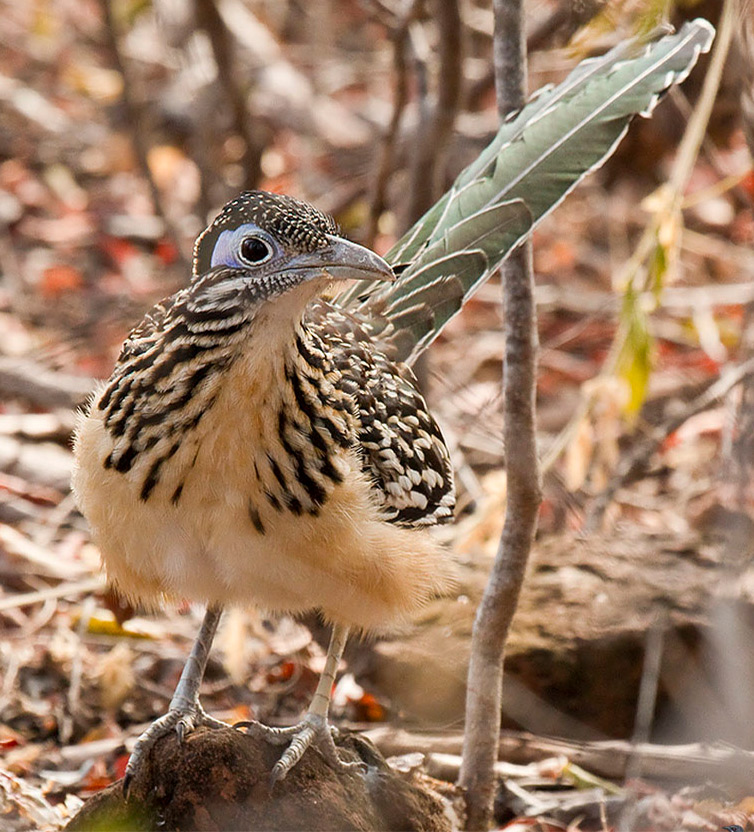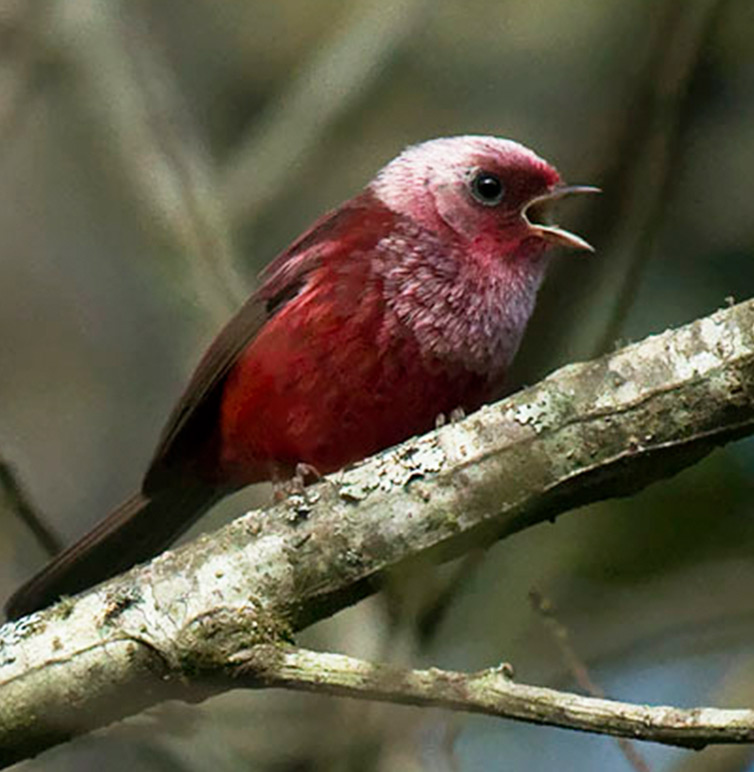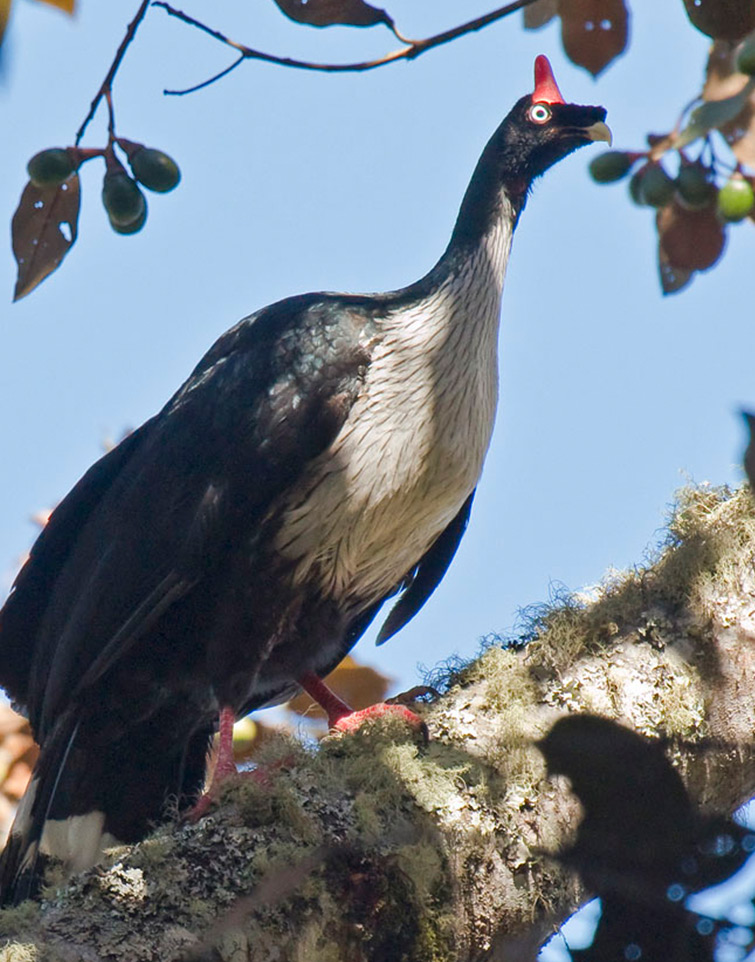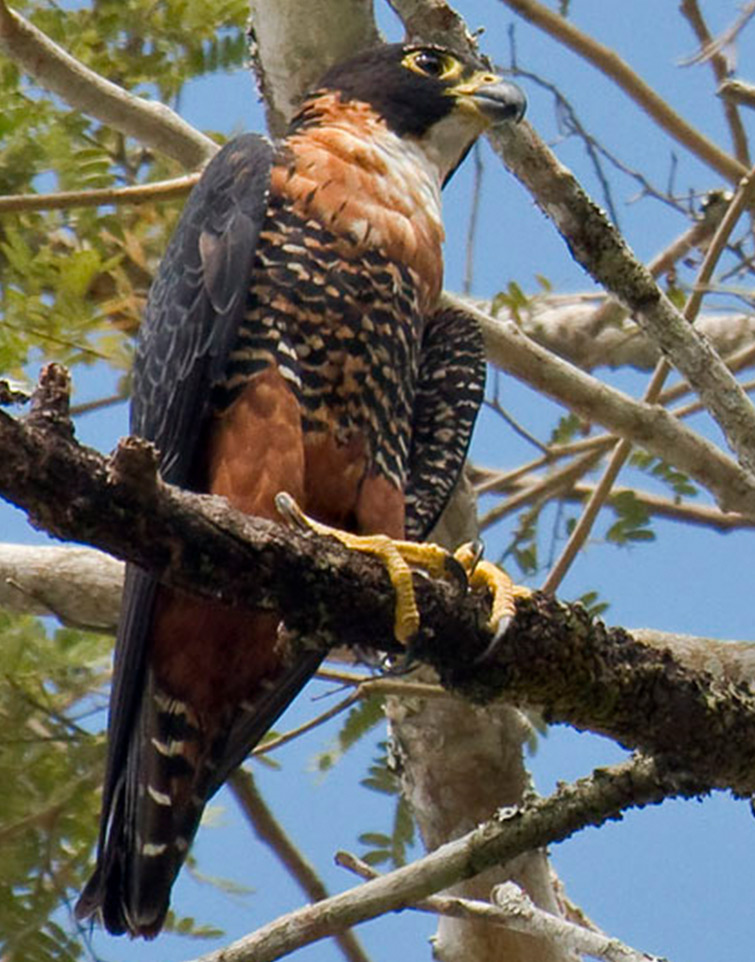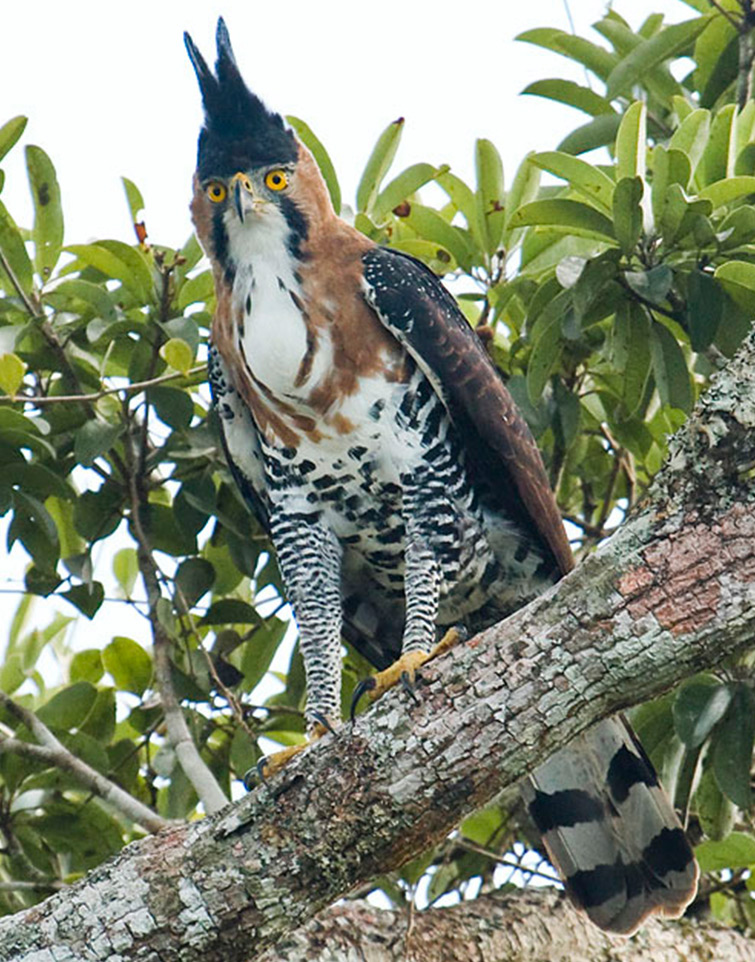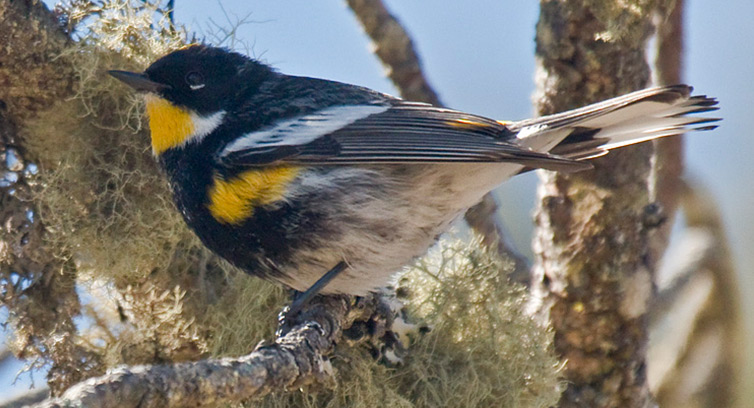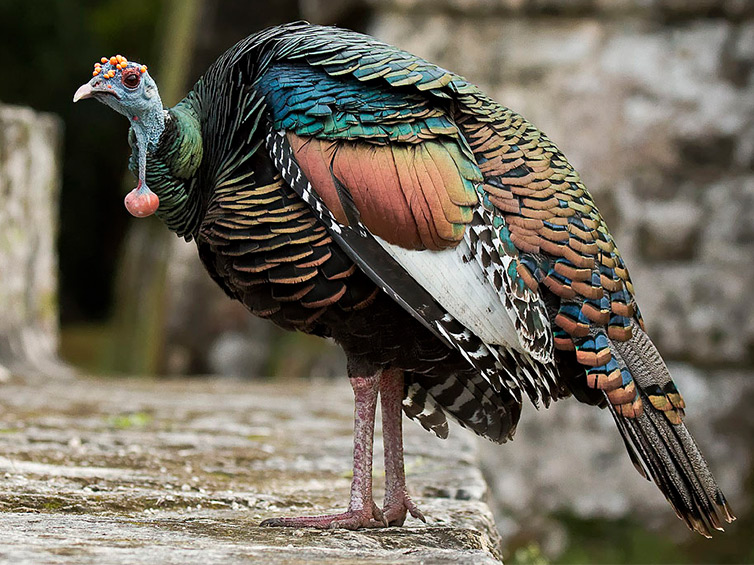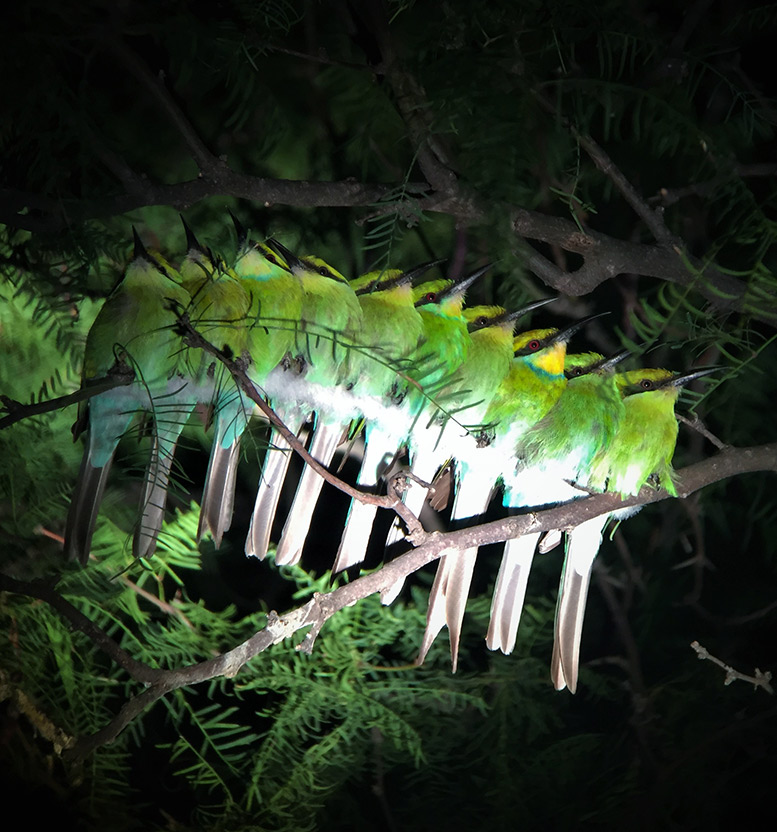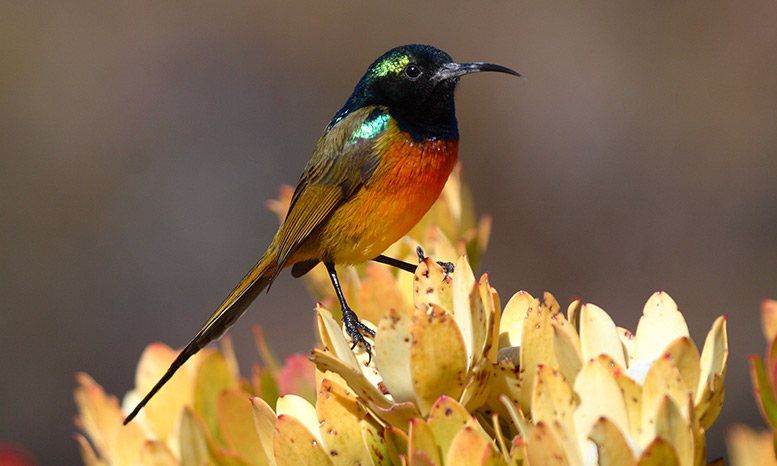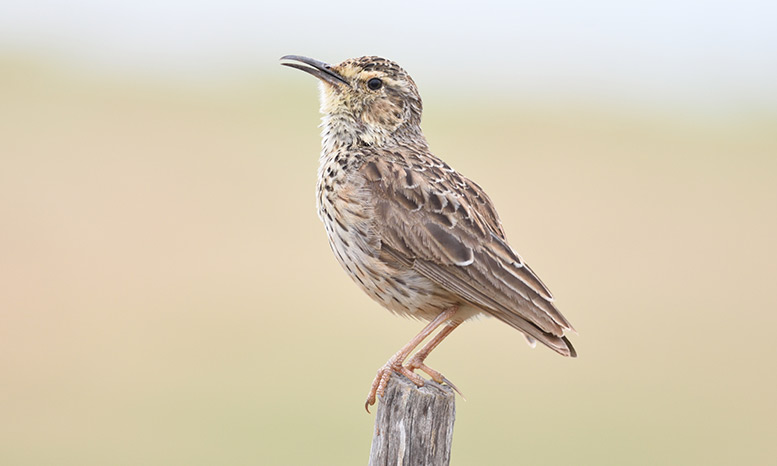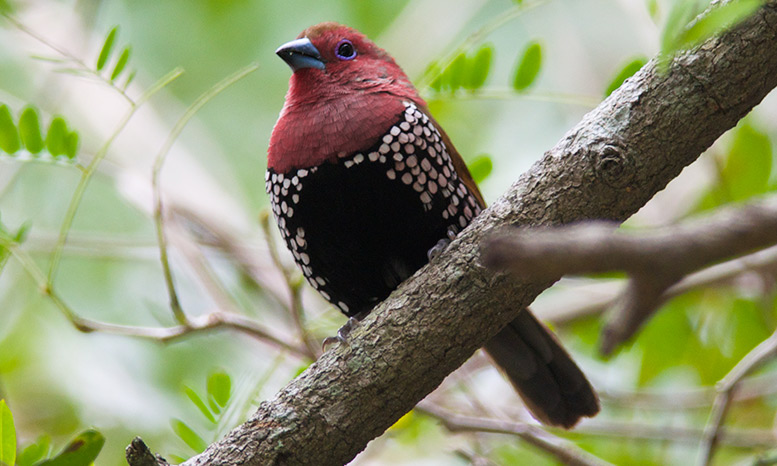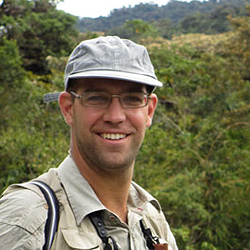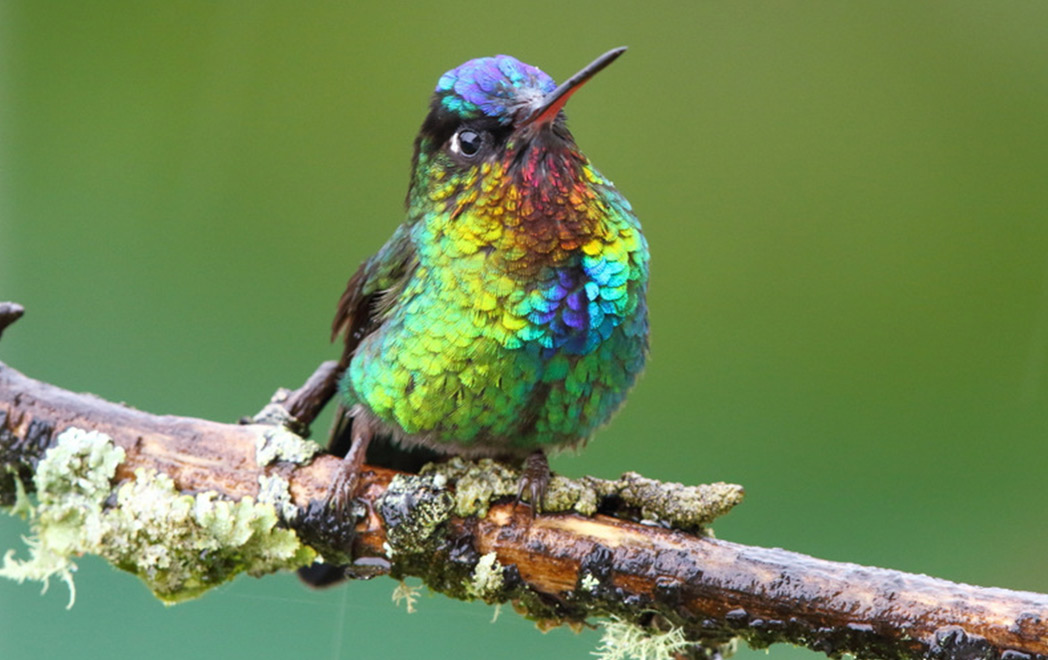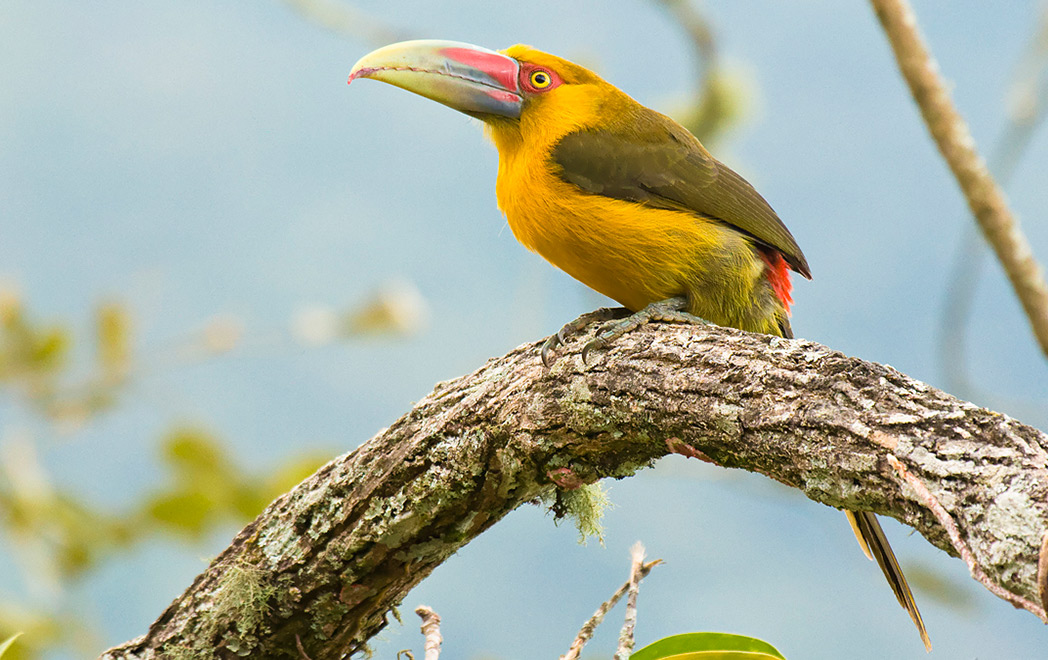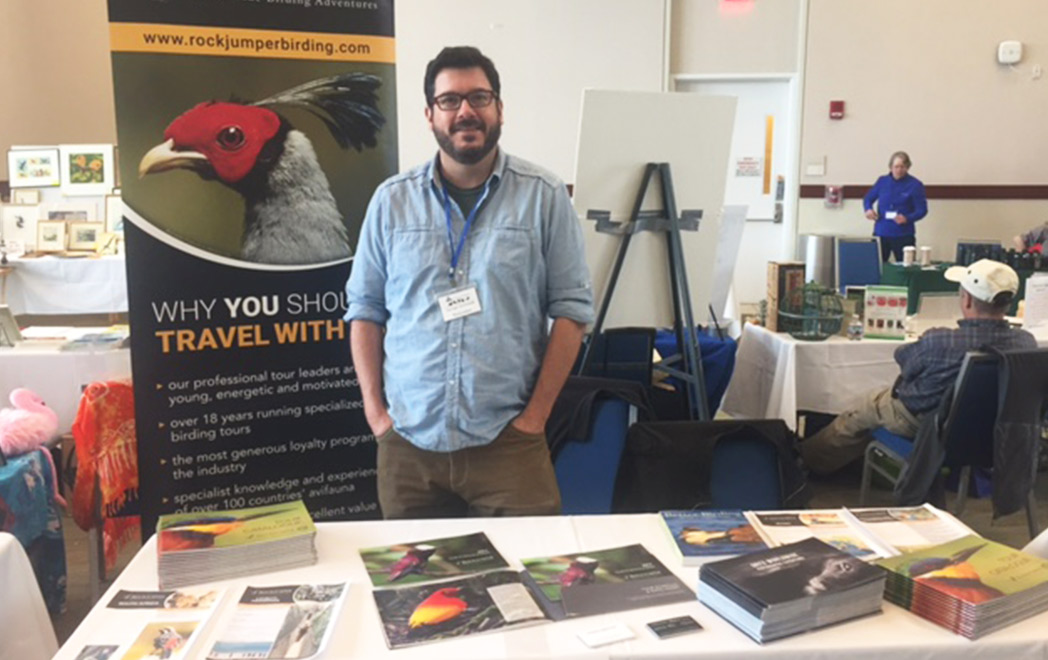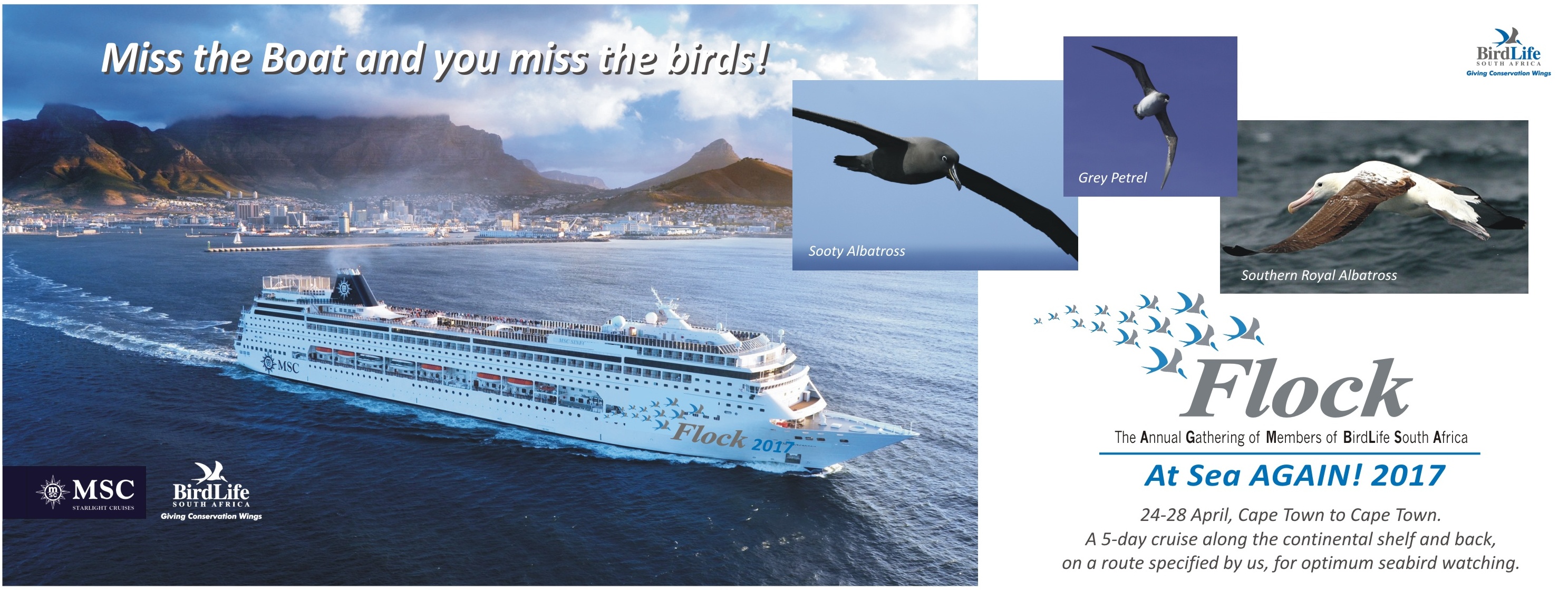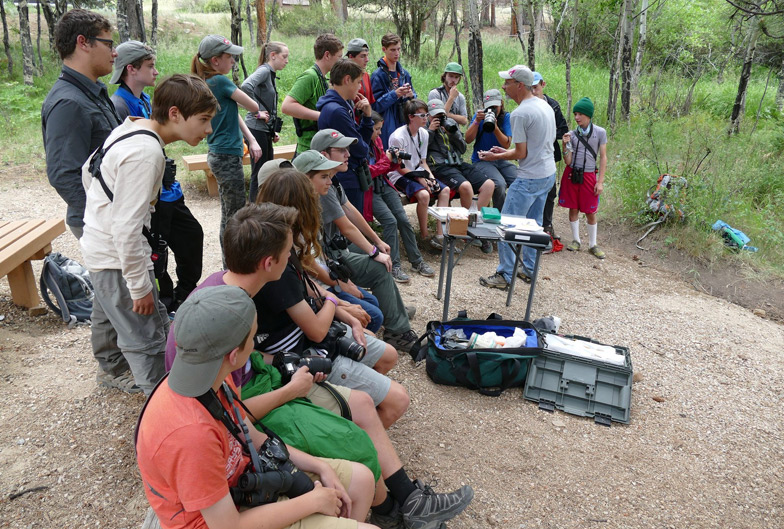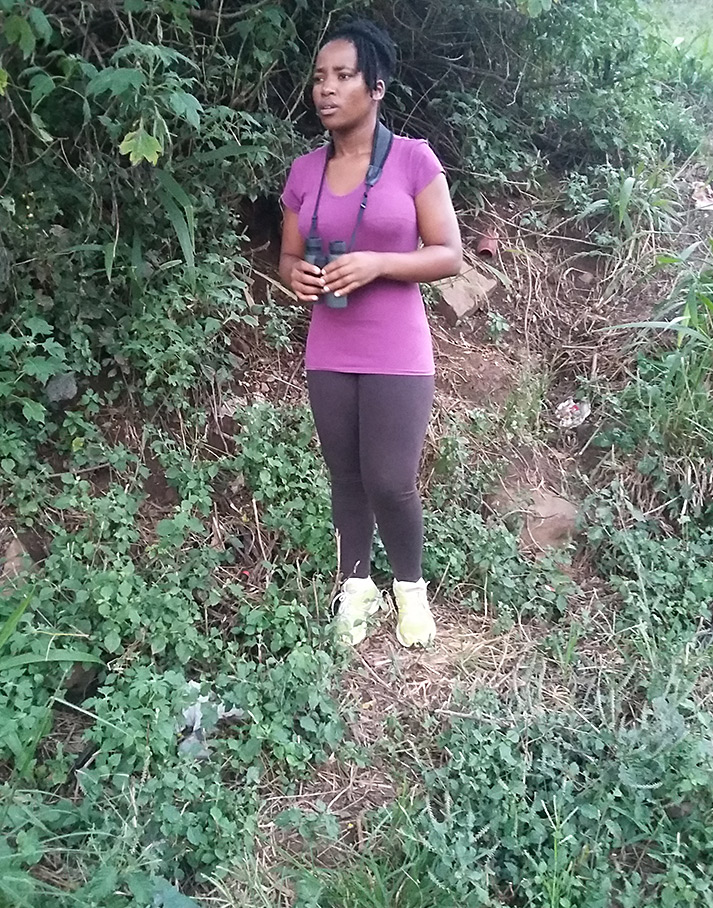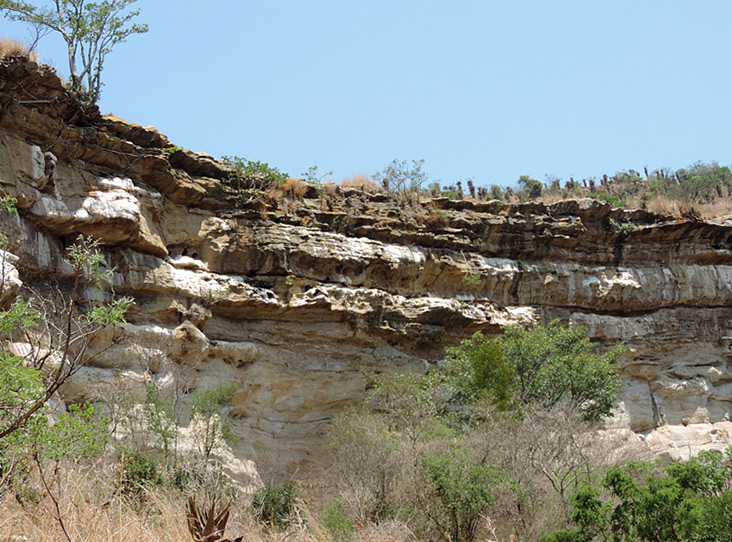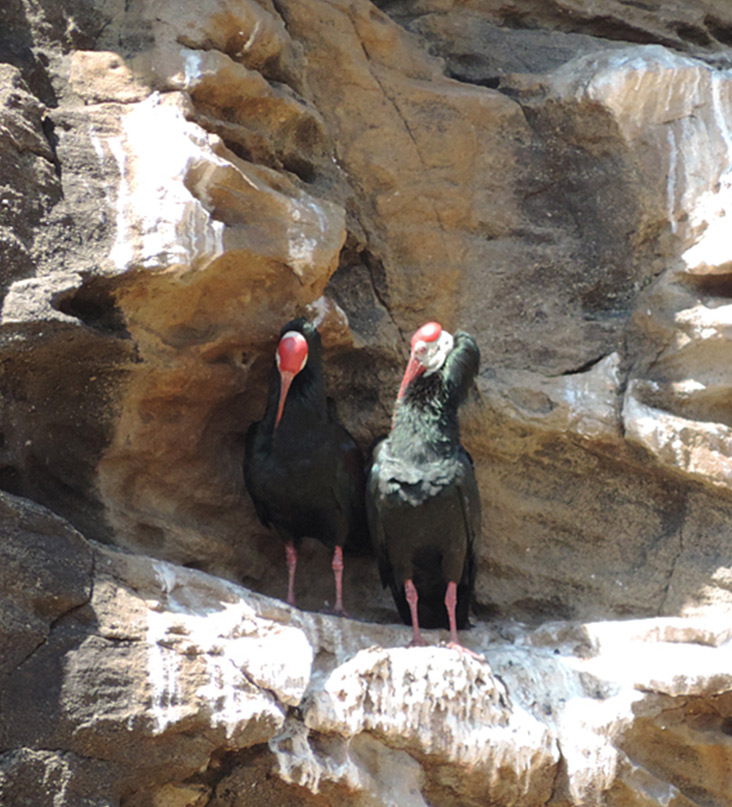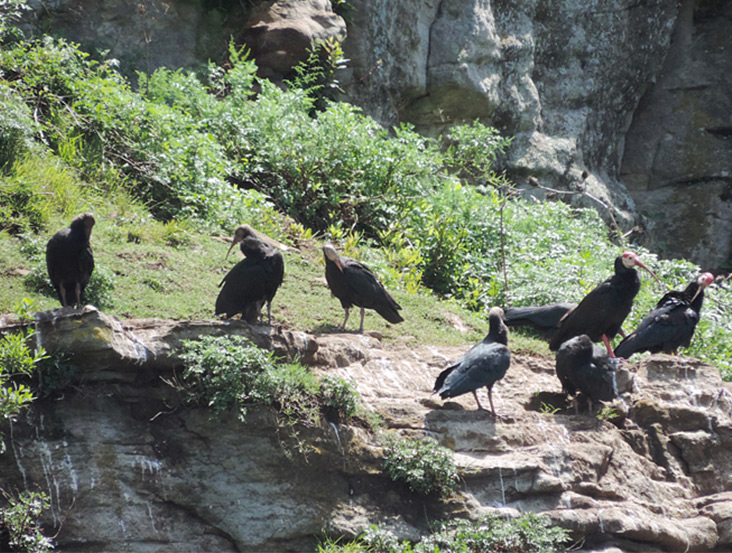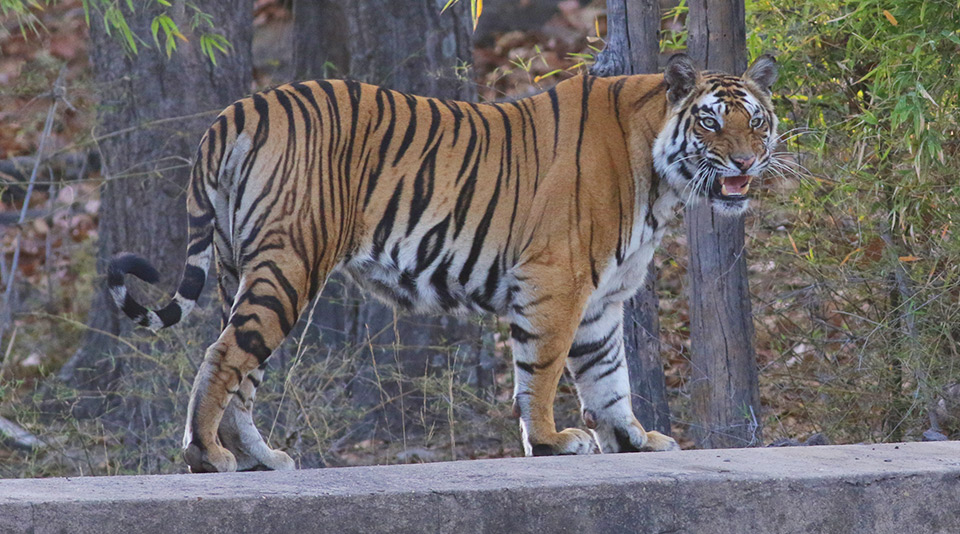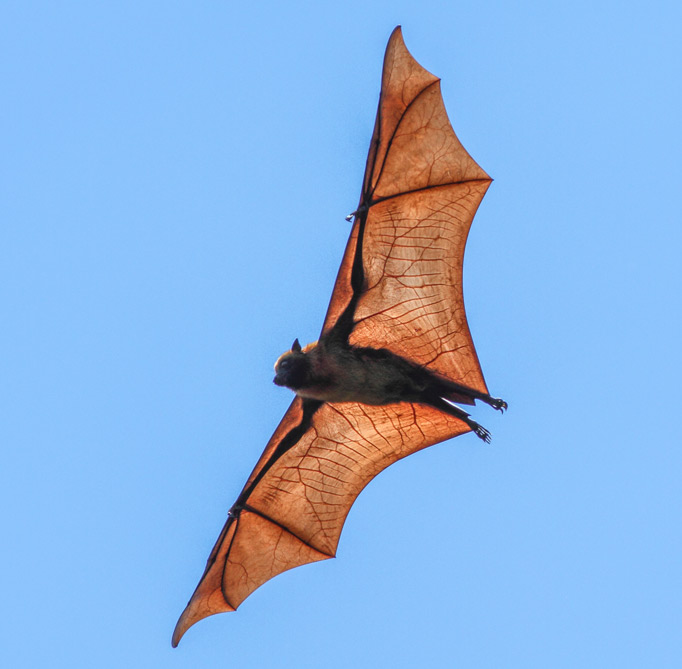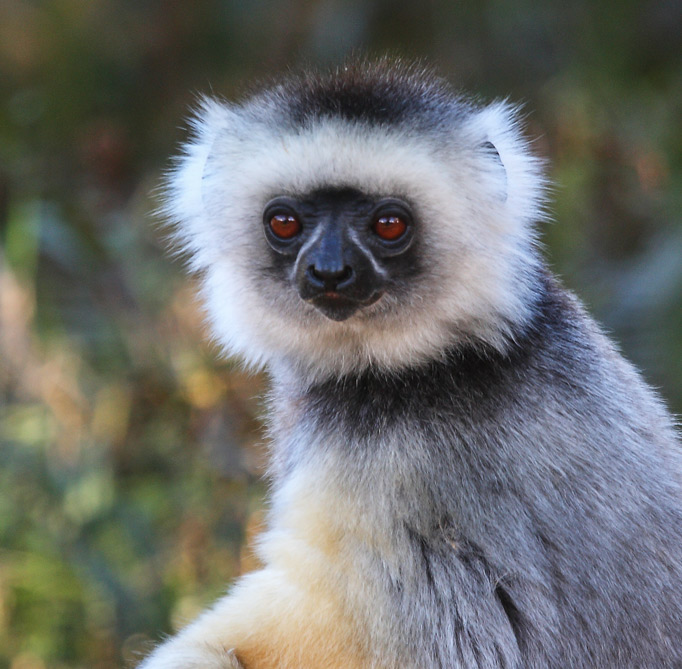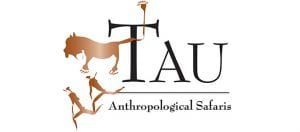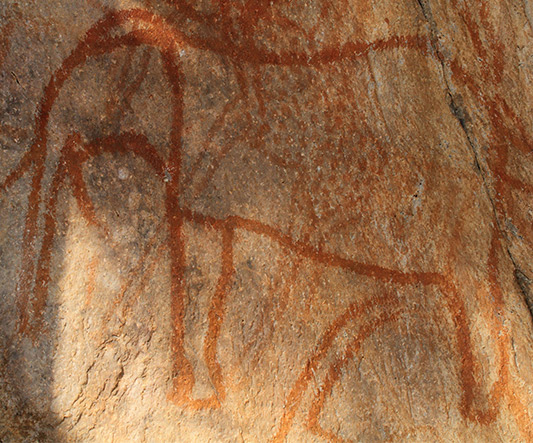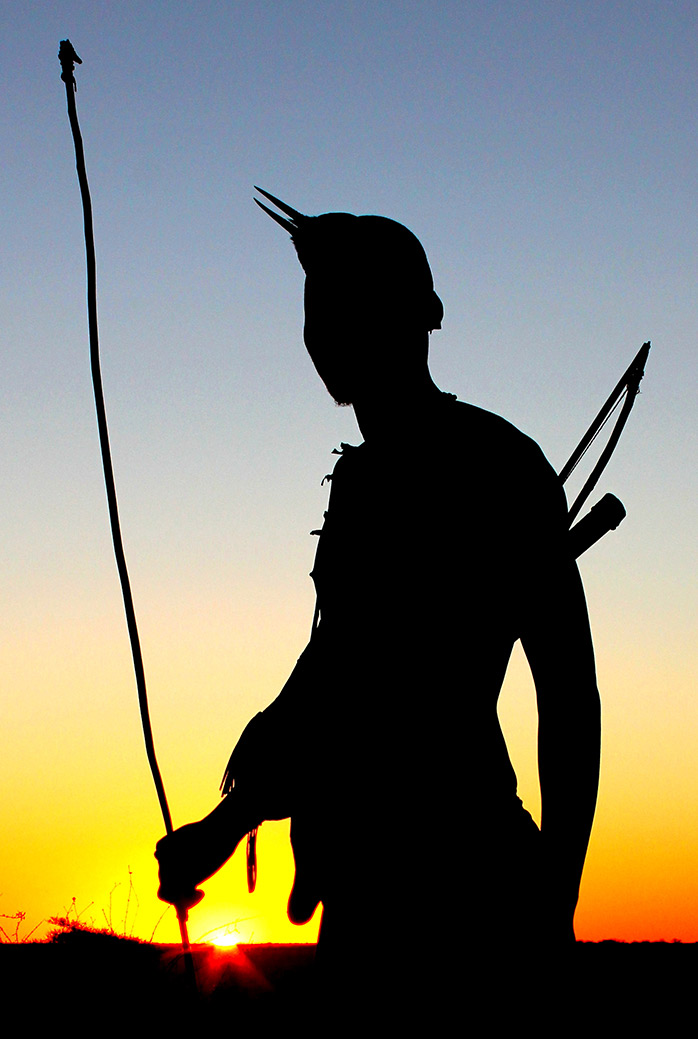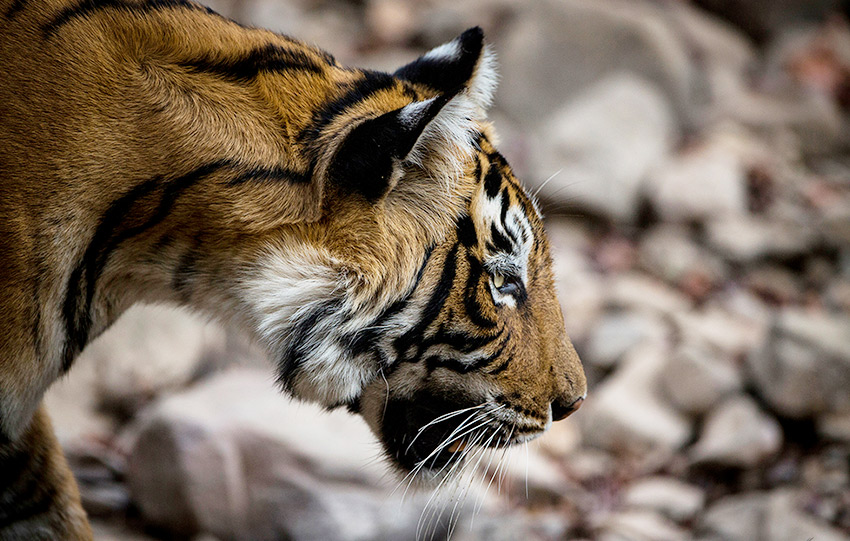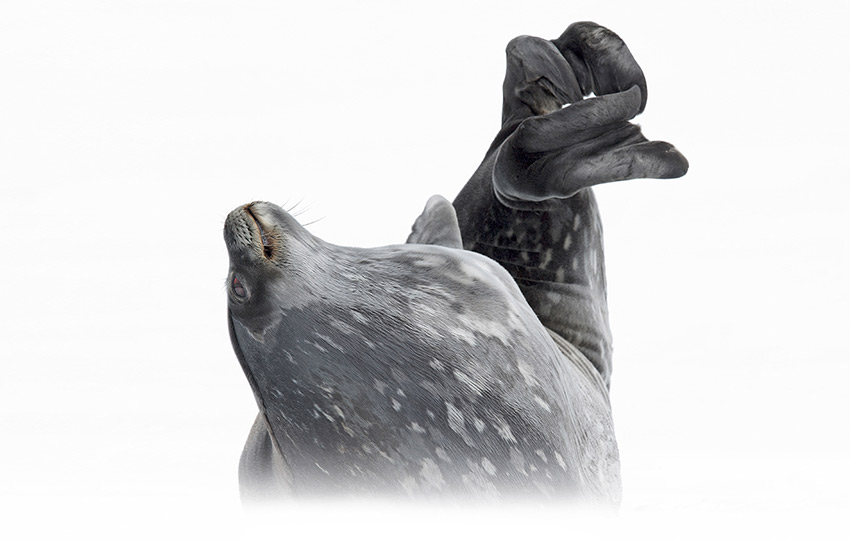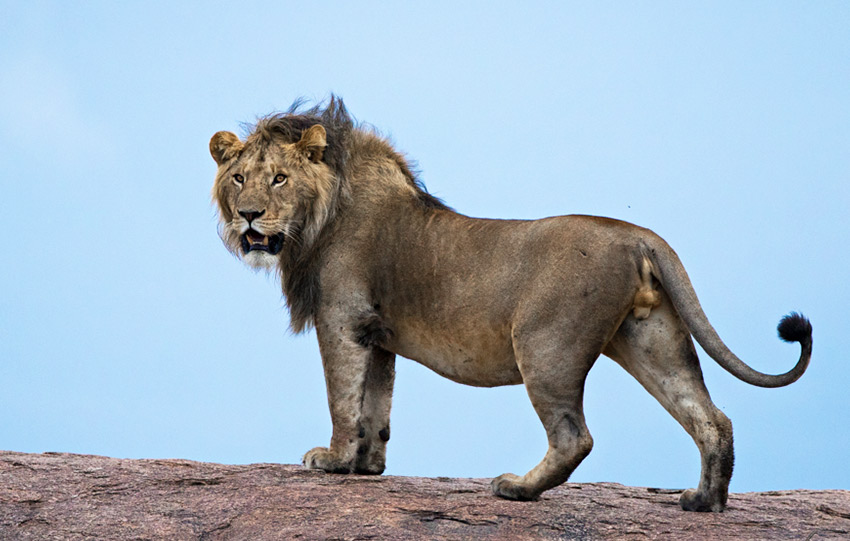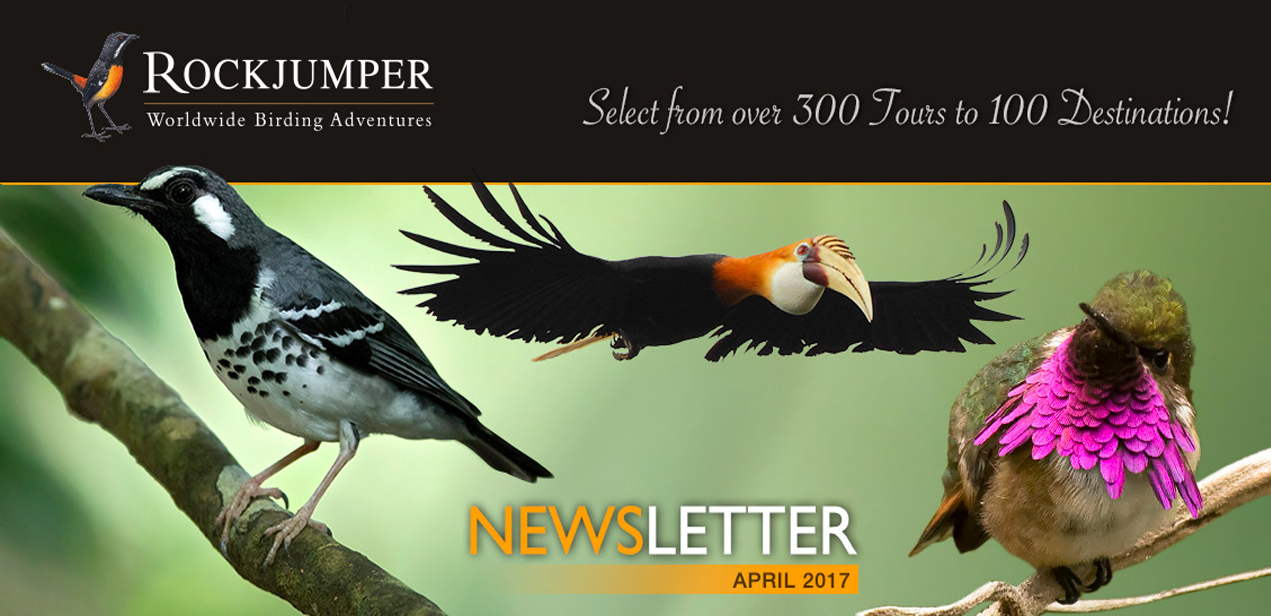
Greetings Rockjumper Friends!
We hope you enjoy our April Newsletter with news on recent tours, upcoming birding adventures, and special deals, including the Rockjumper Early Bird Discount where you can save 10% on many of our scheduled tours. We have finalized more 2018 departures since our last newsletter, so please take a look at our Tour Calendar to learn more. Whenever you are registering for a Rockjumper tour, remember to consider your eligibility for our Customer Loyalty Programs. We are proud to offer you exceptional value on your birding adventure of a lifetime!
So, take a peek at what we’ve been seeing lately on our travels with you, and remember to get in touch so we can help make your birding dreams become reality.
Kind regards
The Rockjumper Team
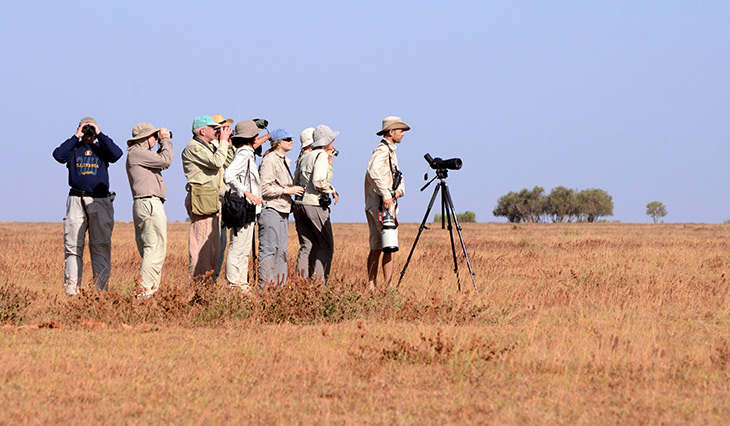
Birding the Liben Plains in Ethiopia by Wayne Jones
Travel with Your Friends & Family
Creating customized private trips for groups of friends and families is a big part of what we do. Rockjumper’s private tours department continues to go from strength to strength in 2017, and now we are running over 60 tailor-made trips all over the globe, including destinations such as South Africa, Ethiopia, the Gambia, Tanzania, Malawi, Namibia, Zimbabwe, Sri Lanka, India, Bhutan, Bali, Thailand, Puerto Rico, Jamaica, Panama, Brazil, and the list goes on. Rockjumper private trips work for virtually any group size, from a solo traveler to 100+, so whether it is your family, a group of friends or your bird club, we can accommodate you. The trips are easily designed around your focus or preference, such as targeting specific species, general birding and wildlife viewing or a family holiday abroad.
Exciting news for us is that, during February, we added another dimension to the private tours’ repertoire, namely wheelchair-based birding! This first of its kind trip took place on the tropical island of Sri Lanka, and was almost entirely wheelchair based (any other birding was done from a vehicle/safari jeep). We recorded 33 of the 34 Sri Lankan endemics and a host of other specials that occur on the island. This, in combination with the superb infrastructure, incredible cuisine and wonderful scenery, made for an all-round successful venture.
Let us set you up! If you are interested in setting up a custom trip, please contact Cuan or Jeremy at private@rockjumperbirding.com
Additions to Our Team
Take a look at what is happening within our company, from new team members and statistics on our eco-friendly office building to intrepid tales of birding, running and land regeneration.

Sophie Lane (Specialist Tourism Consultant)
Sophie was born in Brighton, on the south coast of England, where she lived for 25 years. Brighton is a vibrant city and situated between beautiful pebble beaches and the South Downs National Park, and Sophie grew up enjoying an outdoor lifestyle. After completing her college education, Sophie held various jobs, including retail, customer service and administration, before most recently working for a busy Property Management company. The opportunity to move to Mauritius came in 2015, where she now enjoys living with her partner, Tom, and their rescue dog, Luna. Sophie volunteered at the local wildlife center, and has now joined the team at Rockjumper. Sophie has been a life-long nature lover, and can often be found hiking in the gorges, cycling, swimming in the ocean and reading on the beach. She also enjoys films, theatre and acting.

Lara Gibson (Adam’s PA)
Lara Gibson was born and has lived most of her life in the small town of Hilton, KwaZulu-Natal. She spent her childhood holidays between the beautiful beaches of KwaZulu-Natal’s North Coast and the stunning scenery of Zululand. After completing her studies in Public Relations with Bookkeeping, she took some time off to travel extensively overseas before returning to South Africa to continue broadening her career path. She has a keen interest in the outdoors and the things that come with it – especially wildlife – and her young daughter continues to keep her busy with numerous adventures.

Holly Faithfull (Part-time Tour Leader)
Holly’s passion for nature and wildlife began at a young age growing up in rural England. Her curiosity about the world took her travelling at the age of 17, and she has not looked back since, with her interest in wildlife taking her to more than 100 countries. While continuing her travels, Holly qualified as a lawyer, spending seven years as a commercial litigator for an international law firm in London before her wanderlust finally drew her away again. Since 2000, she has been involved in ecotourism full-time, scouting and operating wildlife-watching trips all over the world, as well as guiding tours to more than 50 countries on six continents.
Company News
Rockjumper House’s Eco Stats
Rockjumper House are our new office premises in South Africa in the lovely Garlington Estate (more about this estate in the next section of the newsletter). Check out the real-time stats of our green building’s two power-saving inverters on the Goodwe website over here and here. The data has been translated into a measurement any environmentally-concerned person would understand and appreciate – trees! With the high toll our modern infrastructure takes on the environment, and in particular, the cutting down and burning of trees for producing energy, this seems to be the most fitting measurement of success. Therefore, the Goodwe website has worked out how many trees would normally need to be consumed to produce the same amount of energy as our inverters. Rockjumper House is proud to be part of this growing movement, and so far has prevented 6.502 trees from being destroyed in the past few months.

Birding at Garlington Estate
By Adam Riley
Garlington Estate is a mixed residential estate in the scenic, green hills of the Natal Midlands near Hilton, South Africa, and is home (since October 2016) to the South African headquarters of Rockjumper Birding Tours. Although much of the estate was previously agricultural fields (mostly gum and sugarcane plantations), extensive sections of pristine grassland have remained, as well as slivers of riparian forest. Since homes began to be built about 7 years ago, large numbers of indigenous trees have also been planted. Garlington has surprisingly, and much to my delight, proven to be an excellent birding location. No bird list for the estate had existed previously, so I have taken up the task. So far, I have compiled a list of 179 species that have been recorded on the estate – I have personally seen 149 species.
Even from our offices, in the heart of the estate, we have seen some superb birds. Low flying Blue and Southern Crowned Cranes have been highlights, as well as a plethora of raptors, including African Fish, Long-crested and Wahlberg’s Eagle, African Harrier Hawk and Black and Little Sparrowhawk. Other office ticks include European Bee-eater, Red-throated Wryneck and Bokmakierie.
Elsewhere on the estate, a small marsh supports a pair of Red-chested Flufftail, as well as resident and breeding Little Rush Warbler, Fan-tailed Widowbirds and Grosbeak Weavers. The rich grasslands beyond the marsh and outside of the estate have a healthy population of uncommon Broad-tailed Warbler and on the estate itself, the grasslands have Wing-snapping, Zitting, Wailing, Levaillant’s and Croaking Cisticolas, Cape Canary, as well as a few pairs of Dark-capped Yellow Warbler. Yellow-throated and Cape Longclaw, Rufous-naped Lark and Drakensberg Prinia occur, and Zebra Waxbill was a recent addition to the estate list. One of the estate residents even has a pair of Corncrake visiting their garden. This very rare and sought-after European migrant usually spends its non-breeding time skulking in dense grasslands, but these birds even come out into the open lawn of their garden!
In the forested gullies, species I have recorded include Natal Spurfowl, African Paradise Flycatcher, Terrestrial Brownbul, Southern Boubou, Brown-backed Honeybird, Olive Bushshrike, the scarce Southern Tchagra, Olive Sunbird, Bar-throated Apalis and vocal Red-chested, Black and Klaas’s Cuckoos
A lake near our office has produced some great birds, including the uncommon White-backed Duck, Hamerkop, African Jacana, African Rail, Pied Kingfisher and African Marsh Harrier.
Mammals also abound, and include a healthy population of Southern Reedbuck and Grey Duiker, as well as a few Impala. Serval, Caracal and Large Spotted Genet have all been seen on the estate and Black-backed Jackal can be heard at night. Surrounding properties are home to several known Leopard territories and I have seen the rare Oribi antelope, as well as Blesbok, Burchell’s Zebra, Bushbuck and Warthog from the estate.
If you are ever in the area, Rockjumper would welcome your visit and hopefully have an opportunity to show you some of the great birds and wildlife with whom we share our new home!
Birding and Running
By Eric V. Pozzo
In the mid-70s, when I became serious about birding, I set a goal of seeing 700 ABA birds. The achievement of this goal provided the motivation to do the crazy things we all do to see that next new bird.
In the mid-80s, I started running with my girlfriend (now wife) and needed similar motivation to keep up this healthy activity year-round. I set a goal of 25,000 miles, roughly the circumference of the earth, and started a running log in 1988. Motivation to keep up a steady annual pace came from knowing nothing would get easier as I got older – a run on a cold, rainy winter’s day in my 30s was going to be far easier than a run on any day in my 60s!
Whenever possible, I sneak runs in during birding trips to build the cumulative mileage. Many of you saw this insanity as I did laps around the deck of the ship during Rockjumper’s 2008 Antarctic cruise, while we were in the smooth waters of the bays. One of my toughest runs ever was from the Canopy Tower in Panama. The downhill part was easy, but I underestimated the jog back up the hill! (I ran circles around the parking lot the next day to get the miles in). Memorable birding trip runs include getting caught in a violent thunderstorm on trails in Brazil, and scampering across the rope bridges at Ambua Lodge in Papua New Guinea. On one early morning run, in a remote part of Venezuela, my ignorance led me to believe the Howler Monkeys in the surrounding forest were jaguars conversing about their next meal (Me!). There was also a time where a troop of monkeys, led by aggressive males, challenged my route at Corbett National Park in India.
I finally achieved the mileage in January; as I travel with Adam Riley a lot, he suggested I write a note. And I did see ABA #700: a Juniper Titmouse. I saved the 6-hour expedition for Adam’s visit to Oregon in 2000 – we heard the bird and you would know then he had to find it for me… seems to be the story of most of my travels with Adam. My revenge comes when he tries to run with me, though.
Land Regeneration Project
By Clayton Burne
Since I was old enough to know the difference, I’ve despised invasive aliens. Be it plants, trees, birds or mammals, I have been on a mission to be rid of them, using whichever option works the best. My parent’s yard in Durban was my first ‘stomping ground’, where anything foreign got the chop. Having replaced these with as many trees as possible, it was not long before I realised I needed a little more space to get what I wanted done.
Having relocated to a small holding near Bela-Bela, I had the scope with which I had always dreamed of. Except, the ground was awfully hard and I knew nothing of the local tree and plant species. In the interim, there was a far greater issue to be dealt with, for the entire area was engulfed by ‘Queen of the Night’ (Cereus jamacaru), a tough as nuts cactus from north-eastern Brazil that grows up to 5m (16ft) high and produces very attractive white flowers that last a single night. The local government was concerned enough about this pest that they provided free herbicide to anyone who agreed to clear their land.
I took a 12-year hiatus from clearing exotic plants while living in Europe and traveling the world, before returning to South Africa to continue my work on my parent’s garden in Bela-Bela. Having settled in Pietermaritzburg, Meg discovered that I couldn’t help myself – even with only a tiny piece of land, I was intent on removing the rubbish and replacing it. Out went the aliens and in came a pile of native aloes. Requiring more space, we recently moved to a leafier part of Pietermaritzburg. Here we had a far larger garden, but one without anything but grass. Perfect – I thought; I could get a small forest growing here. Unfortunately, the owner of the property rather liked his grass and so my proposed forest was put on hold. I did manage to insert some Canary Creeper (Senecio tamoides) and Cape Honeysuckle (Tecoma capensis) along the fence lines, add a few smaller trees and plant a few aloes and grass species in plastic, moveable buckets. I still had to wake up to the sight of two English Oaks (Quercus robur) every morning. As much as I’d like to chop them both down, the volume of nesting bird species made this impractical. This year alone has produced new families of African Wood Owl, Green Wood Hoopoe, Violet-backed Starling and Red-throated Wryneck. The bee nest is a favourite haunt of Lesser Honeyguide and numerous other species that seek shelter here. So the English Oaks would have to stay.
I soon learnt that the property along the small river valley opposite our fence line also belonged to the estate, and here there was far more potential – at least for me. It is riddled with Tickberry (Lantana camera), Bugweed (Solanum mauritianum), Black Wattle (Acacia mearnsii), Balcooa Bamboo (Bambusa balcooa), as well as various invasive species of Pine tree (Pinus sp) and Blue Gum (Eucalyptus grands). In fact, I am probably only brushing the surface of what other invasives lay in this valley. Clearing this cornucopia of rubbish has already defeated a number of efforts, both by the estate and the council.
I’m not suggesting that I will uproot every bit of this mess and replant it all with indigenous trees, but I am going to try and make a dent in it. Having secured permission to try my hand at this, I resolved to start slowly and methodically…
Phase one – identify a reasonably sized patch of land and gain permission to plant trees. Permission obtained in late November 2016.
Phase two – obtain suitable trees for planting. I filled the cruiser a few times and collected over 40 trees in two visits to a local nursery that was closing soon.
Phase three – prepare the land. This phase was mandatory due to the presence of a number of Bushbuck, who would happily browse the new trees before they had a chance of growing. Thus a structure around the trees was required.
Phase four – source material for said structure. I headed down to the local equipment store and rented a chainsaw. Until you have stood at the bottom of a giant bamboo clump, this project would have seemed rather straight forward. I was able to retrieve only a small number of the stems that I had actually cut. The remainder are still there, held together 20-metres above by interlocking branches. We transported what amounted to a boot-full (cruiser that is) of stems back to the house.
Phase five – build the barriers. The first one is always the most difficult as you attempt to put into action what amounted to a simple plan. When the first attempt failed, a second was devised and implemented to a much better standard.
Phase six – planting a tree. Having successfully built the first barrier, we selected the first tree for planting and headed over the road. Having chosen a suitable spot, I cleared a little vegetation before sinking the pick axe and spade into the ground. A little pushing and pulling on the bamboo barrier completed the job. Tree number 1, planted on January 2nd 2017 – Monkey Thorn.
To complete the first session of the project, we have another 39 barriers to construct and trees to plant!
Visit Clayton’s blog to follow the progress of his land regeneration project.
With a list of tours that is constantly expanding, we occasionally like to highlight just one that is truly spectacular. Here is a trip that covers one of the world’s most endemic-rich hotspots, making it something to be considered by any diehard birder.
Melanesia
How can a place be both famous and unknown? Seems impossible, yet that is the nebulous territory in our gray matter where Melanesia has taken up residence. There are over 2,000 islands in this region, several of which gained fame as battlegrounds in the Pacific theatre of World War II, but others remain hardly visited by westerners. Wedged between Papua New Guinea and Australia, this is an archipelago of coral atolls, volcanoes, and idyllic tropical waters, and it is a place of staggering biodiversity. As one of the world’s most endemic-rich hotspots, most diehard birders know it is a must-visit. But the problem has always been, how do you do it? With the arrival of two back-to-back cruises: Melanesia Discoverer and Secrets of Melanesia, a large cross section of Melanesia is now within reach. Rich with birds, rich in culture and history, and anchored amid the heart of the Coral Triangle, between sightings of Vulturine Parrot, Blyth’s Hornbill, and Paradise Drongo, we are surrounded by blue waters offering arguably the best snorkeling in the world.
Join George Armistead for a Rockjumper adventure to an avian frontier and a cultural goldmine, and make it Melanesia in 2017.
Last Call! The following highly desirable and guaranteed tours are set to go, with only a few spaces remaining. If you are looking for a fantastic tour to do soon, this is the place to start.
Papua New Guinea – Birding in Paradise V 2017
Tour Dates: 25 Jul – 11 Aug 2017 (18 days)
Tour Price (Per Person): PGK26,250* USD8,256* GBP6,642* EUR7,792*
Tour Leader: Wayne Jones
Our 18-day Papua New Guinea birding tour will comprehensively cover the avian highlights of this enchanting and under-traveled country. Traveling by air, road and boat, we explore the winding lowland rivers, sprawling grasslands, rich highland ecosystems and forested valleys (where native tribesmen, adorned with elaborate head plumes made from the feathers of parrots and birds-of-paradise, dance to mimic the fabulous displays of the latter) in search of our incredible quarry. With these beautiful and diverse habitats as our backdrop, some of the highlight birds we hope to see include Papuan Eagle, Vulturine Parrot, Southern Crowned, Zoe’s Imperial and Pheasant Pigeon, the unreal Flame Bowerbird, five species of Owlet-nightjar, Emperor Fairywren, Golden Cuckooshrike, Mountain Firetail and the possibility of up to 25 Bird-of-paradise species!
Tanzania – Northern: Birds & Big Game 2017
Tour Dates: 1 – 18 Oct 2017 (18 Days)
Tour Price (Per Person): USD7,250* GBP5,833* EUR6,843*
Tour Leader: Cuan Rush
Our tour is set to explore the spectacular scenery of northern Tanzania – one of Africa’s wildest, most stable and least spoilt destinations – in search of the region’s wonderful assortment of endemic bird species. Not that birds are the only focus of this tour, though, since we will also find ourselves marveling at some of the highest concentrations of wildlife to be found anywhere on our planet!
Some of the many regional specials and endemic birds that we will target on this Tanzania birding tour are the beautiful Fischer’s and Yellow-collared Lovebirds, Ashy Starling, Grey-breasted Spurfowl and Rufous-tailed Weaver. With Mt. Kilimanjaro as a backdrop, we will search for the highly localized Beesley’s Lark – one the world’s rarest lark species, with numbers of no more than 250 birds. The tour also ventures out to the Usambara Mountains, part of Tanzania’s endemic-rich Eastern Arc range. Here we will explore both the east and west Usambaras, where possibilities include Uluguru Violet-backed Sunbird, Green-headed Oriole, Fischer’s Turaco, Kretschmer’s Longbill, Usambara Akalat and Usambara Weaver, together with a huge variety of stunningly beautiful and often very confiding African gems, not to mention the fabulous “Big 5”!
Indonesia – Highlights of the East: Sulawesi, the Moluccas & Papua 2017
Tour Dates: 23 Aug – 7 Sep 2017 (16 days)
Tour Price (Per Person): USD6,750* GBP5,431* EUR6,372*
Tour Leader: David Erterius
Indonesia is considered by many as the ultimate birding country, but with over 17,000 islands, 1,600 bird species and 400 endemics, many of them endangered, how does one select where to go? Well Rockjumper has the solution and we are very proud to announce our Highlights of Western and Eastern Indonesia tours that offer an unrivalled selection of the best sites for Indonesia’s remarkable birds and wildlife. We have chosen the most productive islands, hitting both high elevation and lowland sites. This featured tour explores the highlights of the remarkable biogeography of the Eastern Indonesian archipelago, notably the endemic rich islands of Sulawesi, Halmahera and West Papua. Boasting over 70 endemic species, Sulawesi has an exceptional range of highly desirable birds, including Hylocitrea, belonging to its own monotypic bird family, the strange Geomalia, Purple-bearded Bee-eater, the remarkable Knobbed Hornbill, Purple-winged Roller, and Satanic Nightjar. On the nearby island of Halmahera, we will visit a lekking site for the highly sought-after Standardwing Bird-of-paradise; while also seeking a mindboggling number of Mollucan endemics, including the spectacular Ivory-breasted Pitta and Moluccan Owlet-nightjar. To the east, we enter a completely new biological zone as we arrive in Sorong on the great island of New Guinea. Here, a veritable feast of highlights includes up to seven birds-of-paradise, numerous pigeons, parrots and kingfishers. We conclude our tour on the Raja Ampat Island of Waigeo, where targets include Red and Wilson’s Birds-of-paradise (the latter considered by many to be the world’s most beautiful bird), the incredible Western Crowned Pigeon, Lowland Peltops and much besides. The Highlights of Western Indonesia covers Sumatra, Java, Bali, Komodo and Flores.
Brazil – Manaus & Rio Negro 2017
Tour Dates: 1 – 17 Sep 2017 (17 days)
Tour Price (Per Person): USD6,950* GBP5,695* EUR6,520*
Tour Leader: Forrest Rowland
Few countries in the Americas hold more mystique and intrigue than the massive nation of Brazil. No feature on the continent of South America is more recognizable, more written about, or more wistfully contemplated than the mighty Amazon River. Despite the length of this immense river, remarkably, very few ports of access exist. In fact, the Amazon Basin – some 2,800,000 sq. miles (!) – represents one of the largest contiguous areas of intact rainforest in the World. This tour is centered in the heart of the basin, in the states of Amazonas and Para, where we access the entire suite of micro-habitats in the region by spending time in boats, and afoot, in search of the Amazon Basin’s most spectacular and iconic bird species. Some of the avian highlights available to us include Harpy and Crested Eagles, White-winged and Rufous Potoo, Red-necked and Green Aracari, Spot-winged Antshrike, Ash-breasted, Chestnut-crested and Rufous-faced Antbird, and Paradise, Flame-crested and Spotted Tanager. Wildlife possibilities range from Tapir and Pink River Dolphin to the elusive Jaguar. This tour is an in-depth exploration of the best Amazon birding has to offer.
Brazil – North-Eastern Mega Birding Tour 2017
Tour Dates: 21 Sep – 12 Oct 2017 (22 days)
Tour Price (Per Person): USD7,800* GBP6,344* EUR7,415*
Tour Leader: Keith Valentine
North-east Brazil is a land of outstanding contrast: from gorgeous white-sand beaches to arid, cactus-topped plateaus, and the humid montane slopes in between. This region has all the beauty and diversity that any birder could ever hope for. Perhaps what this area is best-known for, however, is the stunning array of beautiful endemics that flourish in the diverse habitats of Ceara, Pernambuco, Alagoas and Bahia. Many of the birds available to us on this tour are, unfortunately, endangered or on the brink of extinction, meaning that chances to see these amazing specials are fading fast and every opportunity to see them should be taken. With this in mind, our tour explores all the best sites in this fascinating region and offers an impressive bird list that includes Lear’s (Indigo) Macaw, the striking Araripe Manakin, Pygmy Nightjar, White-browed Antpitta, the incredibly adorned Seven-colored Tanager, Boa Nova Tapaculo, White-winged Potoo, the extremely rare Banded Cotinga and the near-mythical White-collared Kite! There are few tours that can offer almost 100 endemics in a matter of 22 days, but this tour of north-eastern Brazil will do just that.
Namibia, Okavango & Victoria Falls Overland V 2017
Tour Dates: 25 Sep – 12 Oct 2017 (18 days)
Tour Price (Per Person): ZAR93,000* USD6,780* GBP5,431* EUR6,380*
Tour Leader: Andre Bernon
From the lily-choked backwaters of the Okavango Panhandle to the ochre-colored dunes of the Namib Desert, the breath-taking Victoria Falls to the game-filled waterholes of Etosha National Park and flamingo-studded lagoons of Walvis Bay, this tour provides incredible contrasts and an eco-tourism experience like no other. Our comprehensive overland safari combines the numerous endemic and special birds and animals of the dry, western deserts with the moist Okavango region. Birdlife abounds and we target an impressive array of localized as well as more widespread African species, including such sought-after specials as Slaty Egret, Wattled Crane, Ludwig’s Bustard, Rüppell’s Korhaan, Blue Crane, Secretarybird, Pel’s Fishing Owl (one of ten possible owls!), Hartlaub’s Spurfowl, Damara Tern, Chestnut-banded Plover, the huge Coppery-tailed Coucal, Rüppell’s Parrot, Monteiro’s, Damara Red-billed and Bradfield’s Hornbills, Rockrunner, Violet Wood Hoopoe, Rufous-bellied Tit, Tinkling and Chirping Cisticolas, Bare-cheeked and Black-faced Babblers, Rosy-faced Lovebird, White-tailed Shrike, Herero Chat, Dune and Gray’s Larks, Carp’s Tit, Violet-eared Waxbill and even witness a breeding colony of Southern Carmine Bee-eaters! Spending quality time observing mammals, large and small, will be a major aspect of this tour and we can expect to see an exciting array of charismatic African big game, including the fabled “Big 5”. The spectacular and dramatic scenery, coupled with quality mammal viewing and exceptional birding, all combine to make this one of our most popular birding adventures!
Our inexorable pursuit of finding new and exciting ways to bring you to target bird species around the world leads to many incredible tour offerings. Here are a few of our latest additions.
Vietnam – Mega 2018
Tour Dates: 7 – 31 Mar 2018 (25 days)
Tour Leader: Glen Valentine
After being isolated from the birding and traveling world for so long, Vietnam has become one of the key destinations on the world birding travel map. This mega tour takes in all the essential sites, giving us an excellent chance of locating all of Vietnam’s endemic and near endemic species.
Starting in Hanoi, we take in the best of Tam Dao, Ba Be, Cuc Phuong and Phong Nha-Ke Bang National Parks, targeting White-eared Night Heron, Coral-billed and Streak-breasted Scimitar Babbler, Rufous-headed and Short-tailed Parrotbill, Collared Babbler, Limestone Leaf Warbler, White-tailed Flycatcher, Fujian Niltava, Red-collared Woodpecker, Austen’s Brown Hornbill and Limestone Wren-Babbler.
Heading further south, we cover another large variety of unique habitats, from the dry woodlands of Yok Don and the lush montane forests of Mang Den and Nha-Ke Bang National Park to the scrubby, secondary forest of Lo Xo Pass and the limestone woodland and forest of Bach Ma National Park. These birding hotspots afford us the chance of seeing some of Vietnam’s most seldom-encountered avian specialties that include the near-mythical Chestnut-eared Laughingthrush, Black-crowned Barwing and Annam Partridge, as well as localized endemics and global rarities, such as Yellow-billed Nuthatch, Short-tailed Scimitar Babbler, Red-tailed Laughingthrush, Pale-capped Pigeon, White-winged Magpie, Red-collared Woodpecker, Mekong Wagtail and Sooty Babbler.
A scenic drive from Yok Don will take us to Dalat, a former French hill station at the southern extreme of the Central Highlands. En route we will visit the famous Ta Nung Valley, home to Grey-crowned Crocias, a species thought to have been extinct for over 50 years! From Dalat, we will make day trips to the nearby Mount Lang Bian and Ho Tuyen Lam for the striking, but skulky Collared Laughingthrush, Hume’s Treecreeper, Yellow-billed Nuthatch, Grey-crowned Tit, Vietnamese Cutia, Indochinese Cuckooshrike, Slender-billed Oriole, Burmese Shrike, Vietnamese Greenfinch and Black-crowned Fulvetta. Di Linh offers up some mouth-watering specialties, including Black-hooded, White-cheeked and Orange-breasted Laughingthrush as well as the near-endemic Black-crowned Parrotbill.
We finish our tour in the magnificent lowland tropical forests of Cat Tien National Park. Numerous specialties, both avian and mammalian, occur here, and we could find Blue-rumped and Bar-bellied Pitta, Germain’s Peacock-Pheasant, Green Peafowl, the elusive Orange-necked Partridge, Great Slaty Woodpecker, Lesser Adjutant and Grey-faced Tit-Babbler. Significant mammals could include Leopard Cat, Lesser Oriental Chevrotain, Gaur and three beautiful primates: Black-shanked Douc Langur, Silvered Lutung and Red-cheeked Gibbon.
Now that peace reigns over the once troubled land of Vietnam, we invite those with a taste for the exotic to explore this incredible country.
Borneo – Sarawak & Kalimantan Endemics 2018
Tour Dates: 8 – 19 Jun 2018 (12 days)
Tour Leader: Rich Lindie
This exciting extension takes us deep into the vast and remote ocean of forest that cloaks the Sarawak province of Borneo. There, using recently-made logging tracks to gain access to these forests, we will endeavour to find several of the island’s seldom-seen endemics, including two of the most poorly-known species on earth, namely Black Oriole and Dulit Frogmouth.
Fortunately, many of the species we seek live in healthy numbers here, and we have good chances for specials such as Bornean Peacock Pheasant, Bornean Ground Cuckoo, Bornean Barbet, Mountain Barbet, Bornean Bulbul, Blue-banded Pitta, Hose’s Broadbill, Bornean Frogmouth, Whitehead’s Spiderhunter, Pygmy White-eye, Mountain Serpent Eagle and Bornean Leafbird! And while there are no guarantees ever in birding, we stand an excellent chance of finding both the oriole and the frogmouth. This despite the fact that the former was only known from specimens until its recent discovery, while the latter has remained almost as poorly-known since 1891! To date, our previous efforts have enjoyed a 100% success rate with these two species, on top of recording all of the above-mentioned species.
On its own, this tour offers a chance at seeing around half of the island’s endemics; while as an add-on to our Malaysia & Borneo – Rainforest Mammals and Birds tour, the combination could add all but three of this huge island’s endemics to your list!
Nepal – Birding the Himalayas 2018
Tour Dates: 3 – 16 Dec 2018 (14 days)
Tour Leaders: Greg de Klerk and Rich Lindie
Nepal is a beautiful and diverse land with an amazing variety of wildlife and landscapes. A land of rugged mountains, rhododendrons, massive Mt Everest, sub-tropical jungles and grasslands, its scenery, unique cultural and religious mixes and intriguing history will certainly conquer the hearts and minds of its visitors.
Our birding tour explores all the key areas of this fascinating, beautiful and changing country, beginning in Kathmandu-Shivapuri National Park, where we find Nepal’s only endemic bird, the Spiny Babbler. The Hoary-throated Barwing, a near endemic shared only with Bhutan is another feature. We spend a few days in the Phulchowki Hills, a popular birding site and an excellent introduction to Himalayan birding, with such highlights as Besra, Black Eagle, Mountain Hawk-Eagle, Kalij Pheasant, Rusty-cheeked Scimitar Babbler, White-browed Fulvetta, Grey-headed, Darjeeling and Crimson-breasted Woodpecker, Hill Partridge and Ashy Wood Pigeon.
A visit to Nepal would not be complete without a spot of hiking, so we will spend one day taking a gentle hike from Phedi to Dhampus, a traditional Gurung village. The Gurungs are an ethnic community who inhabit the hills of the Annapurna region, and from this village, we have an unbroken vista of some of the world’s highest mountains: the snowy Annapurna Range, Dhaulagiri and Manaslu. As we climb so will our birding list, with Red-headed Bullfinch, a number of pheasants and even a chance for Scaly Thrush. A visit to the famous Chitwan National Park gives us ample opportunities of finding Tiger and Indian Rhinoceros; while Bengal Florican, Grey-crowned Prinia, Slender-billed Babbler, Rufous-rumped Grassbird and Lesser Adjutant will also be sought.
As the tour draws to a close, we head to Hetauda, where rivers and gorges en route may offer up sought-after Ibisbill, Wallcreeper, Brown Dipper, and a quartet of possible Forktails, covering Little, Spotted, Slaty-backed and Black-backed. Our final birding stop will be at Kosi Tappu Wildlife Reserve, which protects riverine grassland on the banks of the Sapta Koshi River. Here, we may find the threatened Swamp Francolin, amongst other habitat specialists, such as White-tailed Stonechat, Striated Grassbird, Yellow-breasted and Black-faced Buntings, Yellow-bellied Prinia and Black-throated Weaver. Riverside pools may harbor Baillon’s and Ruddy-breasted Crake, as well as Cinnamon Bittern. The Kosi Barrage has formed a massive man-made wetland, which hosts the highest concentration of wintering wildfowl in Nepal. We should be able to find the rare Falcated Duck, Black-necked Stork and Bar-headed Goose amongst the more widespread Asian species.
Our standard-setting tour leaders continue to provide clients with unbeatable birding experiences, while also increasing their own lists of unforgettable moments. What follows are some of the stand-out sightings they have recently enjoyed.
Dušan Brinkhuizen – Emperor Penguin
Visiting the Antarctic Peninsula is a trip of a lifetime in many ways. Bird-wise, there are relatively few species, but the ones you see are all high-quality birds. Iconic species such as Wandering and Snowy Albatross, Snow Petrel, Rufous-chested Dotterel, King Penguin and Snowy Sheathbill are regular features of our Classic Antarctica itinerary. One species, however, is far from guaranteed. This is the Emperor Penguin, the largest penguin in the world (and yes, it is huge!). This so-called “Iron Man”, is the only bird that breeds during the Antarctic winter. The only accessible breeding colony in the peninsula is Snowhill Island. To get to Snowhill, you need to book an “Emperor special”, an expedition that involves a helicopter flight to the breeding colony. The unpredictable weather conditions in Antarctica do not guarantee a helicopter landing either, making Emperor Penguin one of the hardest (and most expensive) birds in the world. Birders visiting the peninsula know that there is always the slim chance of encountering a wandering individual. You just have to be very lucky (and, of course, be on constant lookout) to see this holy grail of Antarctica. On our Classic Antarctica tour in November, we were fortunate to have many birders aboard (including 14 Rockjumper tour participants). We had spotters on deck almost full-time, which resulted in a high yield of rare crackers like White-headed, Kerguelen and Antarctic Petrel. And as luck would have it, we encountered Emperor Penguin on not one, but TWO occasions! First, we watched a spectacular adult on an ice floe together with Adelie Penguins in the Antarctic Sound. A few days later, we ran into a juvenile at Wilhelmina Bay. Look at the size difference compared to the Gentoo Penguin!
Clayton Burne – Dupont’s Lark
As larks are my second favourite family after antpittas, the prospect of finding 13 species in less than 10 days makes Morocco a very appealing destination! By the time we arrived in Midelt, 11 of the anticipated species had been seen. The recently split Maghreb would be found towards the end of the tour.
All of which left Dupont’s Lark. Not only considered to be one of the most difficult birds to see in the entire Western Palearctic, but one that would cause the most discomfort. The Zaida Plains are pitch black at night; with little more than moonlit views of the nearby snow-covered High Atlas, conditions were frigid! As the first rays of light emanated over the horizon, we heard a number of Dupont’s calling. Relief all round to an extent, as we all knew that this was the easy part, seeing these skulkers was another matter. After lots of running around and much gnashing of teeth, we chanced upon an individual that seemed unaware of our presence. 25 minutes of uninterrupted observation followed as it went about its morning business of digging in the sand, scuttling from one bush to another and occasionally standing atop a piece of scrub to observe its surroundings.
Erik Forsyth – Powerful Owl
My bird was an easy choice, Powerful Owl, even though I had seen many good birds recently, such as Siberian Crane, Steller’s Sea Eagle, Ural Owl, Rainbow and Noisy Pitta and Chatham Albatross to name a few. I have been to Australia several times on tour and even though we cover a large area, nocturnal birds are hard to come by. I was beginning to wonder when I would ever set eyes on this magnificent looking beast. We were nearing the end of our tour in New South Wales. On the penultimate day of the tour, we walked along a river with large gum trees, and our local bird guide said that we were looking for a surprise bird and I realized then that this was the site for Powerful Owl. With excited anticipation, we scanned many trees along a fair stretch of the river and at a junction at the river-bend, I scanned up and was shocked to see a huge beast with bright eyes looking down at me – YES! Powerful Owl, what a bird! We were a very excited group and many pictures were taken. We also noticed it had a Red-wattled Honeyeater in its huge talons. A second bird was found nearby. A really big bird for me.
Forrest Rowland – North Island Kokako
New Zealand wasn’t really on my radar of places to see spectacular birds, save for the obvious kiwi and albatross spectacle that we’ve all heard about and look forward to. The other endemic species I presumed to be interesting, but not necessarily exciting or thrilling birds. I was wrong. Very wrong. The parrots alone would’ve been worth the visit! Yet even the magnificent Kaka, working methodically on a tree trunk right overhead, looking (and being) huge and impressive, wasn’t my favorite. My top sighting was surely the North Island Kokako. This crow-sized, hefty, blue-gray bird doesn’t sport a whole lot in the way of color, but it is more than made up for in structure and locomotion. With short wings and a long, full, tail, this stout-legged bird acts more like a terrestrial, flightless species than it does an arboreal one. Therefore, seeing a pair of these endangered endemics bouncing, bobbing and jumping through the canopy (they seldom really fly) to drink water right before us was an exceptional thrill! Throw in an endearing, large-eyed expression and two gorgeous, perfectly circular, neon-blue wattles, and you have my #1 pick for the coolest bird I’ve seen in a long while.
David Hoddinott – Masked Lark
Last year I went on a reconnaissance trip to southern Ethiopia around the town of Mega – the town is well named, as there are some “Mega” birds there. One of these is the nomadic and rare Masked Lark, which has been a nemesis of mine for years. I had spent two full days scouring the lava plains in the area trying to find it, without success, but an opportunity came again this year, when Rockjumper organized a private trip for two clients who had already been to Ethiopia, but were keen to see a select few specials. We ventured to the Mega area on our first morning, traveling to the lava plain. Upon arriving at the site, we quickly noticed a large lark. This turned out to be a Red-winged Lark, but in the distance, however, a small flock of birds caught my attention. We walked out across this arid landscape to get a closer look. Cryptic camouflage meant that it took a while to relocate the birds, but once we found them and got a little closer, we enjoyed tremendous views of not one, but a flock of six (!!) Masked Larks. Elated, we were high-fiving all around and continued to watch them feeding for several minutes. I was able to get a few photos, one of which you can enjoy here.
Wayne Jones – Egyptian Plover
At the tail end of our Ethiopian Endemics I tour, we visited Ghibe Gorge, to the west of Addis Ababa. It is well-known as an accessible site to find many species at the very edge of their eastern distributions. We were on our way up and out of the gorge when we made a quick stop along the river to check for finches and canaries drinking in the heat of the day. In the process, our local guide inadvertently flushed a small wader, a boldly-marked, black, white and grey bird – it was an Egyptian Plover! Also known as Crocodilebird, the Egyptian Plover is a unique species now placed in its own bird family. The stunning bird landed on a mudbank not far away, allowing us to admire it at length until we simply had to move on due to time constraints. While regular in the area during summer, it was unusual to find this species there during winter, and it was a first for a Rockjumper Ethiopia tour!
Glen Valentine – Blakiston’s Fish Owl
In Japan, the group and I were rewarded with the most fabulous views imaginable of one of the world’s great birds, the once-mythical Blakiston’s Fish Owl. This magnificent, regal owl, the largest on Earth, is restricted to the riparian deciduous and coniferous forests of northern Hokkaido (northern Japan) and far north-eastern Russia/Siberia. Revered by the native Ainu peoples of Hokkaido, where it is known as Kotan Koru Kamuy (Divine Being that Protects the Village), it is currently listed as endangered. This quintessential Japanese gem has become much more erratic and unpredictable in recent years. We were prepared for an all-nighter in order to see this beauty, and sitting in the cosy room of the guesthouse, peering out through the foggy windows onto the icy, snow-surrounded river, our wait began. Fortunately, luck was with us and inside an hour, a handsome, adult Blakiston’s Fish Owl appeared just at the edge of the small pond in the spot-lights. It stayed for several minutes, affording us breathtaking views of this spectacular owl. An amazing and unforgettable experience!
David Erterius – Crested Honey Buzzard
In the company of some good friends, enjoying the warm, Swedish summer breeze at the Falsterbo Bird Observatory, we were a bit surprised to see small numbers of migrating raptors showing up in the airspace over the Falsterbo Peninsula. Normally, tens of thousands of raptors are seen over the peninsula later in the year.
By mid-afternoon, what we determined to be a ‘European Honey Buzzard’ flew overhead. I took a few record photos, mostly to test my new lens, but later scrutiny revealed the bird to actually be a putative Crested Honey Buzzard – the underparts and wing-coverts were evenly ochre-colored with no markings, it had a distinctive head pattern with a pale throat and a dark gorget and a central mesial stripe, a broad terminal band on the tail and the wing-formula showed a clearly visible sixth finger.
The sighting was put on the Swedish Rare Bird Alert ‘Bird Alarm’. Within hours, hundreds of people in various birding communities across Northern Europe knew about the sighting.
If accepted by the Swedish Rarities Committée, it will constitute the first ever in Northern Europe and only the second for Europe! The only accepted record in Europe prior to this one was a bird on migration at the Strait of Messina in southern Italy, 18 May 2011.
Adam Walleyn – Aye Aye
On our Masoala extension, we had a great thrill when a lengthy stakeout resulted in prolonged views of the mythical Aye Aye. This, the world’s largest nocturnal lemur, is incredibly elusive and seeing a truly wild Aye Aye is a very rare occurrence. It took until midnight before the animal finally put in an appearance but, happily, it stayed around with plenty of time for all participants to be roused from their rooms and enjoy lengthy views. The lemur was feasting on Canarium nuts, using its incredibly long middle figure to scoop out the pulp. It then ate the pulp and discarded the nut before moving on to the next and repeating the process. An experience to remember!
Adam Riley – Steppe Whimbrel
The Steppe Whimbrel is a little-known subspecies of whimbrel that has a breeding population possibly as low as 6 pairs. It was declared extinct by Russian experts in 1994 but then the 6 pairs were rediscovered in 1997 in the Russian Steppes. It was last seen on its African wintering grounds in 1965, until Gary Allport dramatically found 2 birds in Maputo last year. I was keen to fly to Mozambique to see this incredibly rare bird but wasn’t able to make it. However, I recently learned that at least two birds were overwintering at Richardsbay on the Zululand coast of northern South Africa. With info from helpful local birders, a few of us popped out recently, and we saw both birds and had close views of one quite confiding individual. It differs from the nominate phaeopus race of Whimbrel by the pure white axillaries and much of the underwing, finer streaking on the breast ending in a band higher on the chest and generally being much whiter on the underparts. A full discussion of this bird can be found in Gary’s excellent article. If this became a full species (a matter under discussion), it would certainly be one of the rarest and most endangered birds in the world!
The past few months have produced some unbelievably impressive tours for us. Some even finding more success than any preceding Rockjumper tours! What follows are a few tales of these epic adventures.
Southern India – Birding & Wildlife of the Western Ghats I and Sri Lanka – Endemic Birds & Big Game I 2017
By David Erterius
Rockjumper’s recent trip to Southern India was a fabulous adventure, starting off in Bengaluru on the Deccan Plateau before traversing the Nilgiri and Anamalai Hills, and finally heading to the Cardamom Hills in the south. We were delighted to see nearly all of the bird species that are endemic to the Western Ghats Mountains – one of the eight “hottest hotspots”on earth in terms of biodiversity – and not only that, all of them were showing off really well. Nilgiri Wood Pigeon, Grey-fronted Green Pigeon, Malabar Grey Hornbill, White-cheeked Barbet, Malabar Barbet, Blue-winged Parakeet, Malabar Woodshrike, White-bellied Treepie, Malabar Lark, Flame-throated Bulbul, Wynaad Laughingthrush, Black-chinned Laughingthrush, Kerala Laughingthrush, Nilgiri Thrush, White-bellied Blue Flycatcher, Nilgiri Flycatcher, Nilgiri Blue Robin, White-bellied Blue Robin, Black-and-orange Flycatcher, Nilgiri Flowerpecker, and Nilgiri Pipit all showed well for us. A true highlight of the tour was point-blank views of the tricky Nilgiri Thrush. The whole group was absolutely exhilarated by the views we had as we were watching two different individuals of this shy and secretive species foraging on the leaf litter for around twenty minutes, only some fifty feet away! Another bird voted as one of the star-endemics of the trip was Black-and-orange Flycatcher, and we had a total of five birds seen very well high up in the Nilgiri Hills. Other species during the tour that are worthy of mention were Painted Bush Quail, Yellow-legged Buttonquail, Blue-faced Malkoha, Fork-tailed Drongo-Cuckoo, Sri Lanka Frogmouth, Jerdon’s Nightjar, Malabar Trogon, Blue-bearded Bee-eater, Heart-spotted, White-naped, and Rufous Woodpecker, Indian Pitta, Yellow-throated Bulbul, Rufous Babbler, Crimson-backed Sunbird and Little Spiderhunter.
We also had a number of mammals; the selection including Nilgiri Langur, Western Ghats Striped Squirrel, Large Brown Flying Squirrel, Indian Giant Squirrel and Stripe-necked Mongoose.
From Southern India, we took a flight to the capital of Sri Lanka, Colombo, and started off another fabulous eleven-day adventure on this endemic-rich tropical island. Here we nailed every single one of the 34 endemics, including great views of trickier species such as Sri Lanka Spurfowl, Green-billed Coucal, Serendib Scops Owl, Sri Lanka Blue Magpie, Sri Lanka Bush Warbler, Sri Lanka Thrush and Sri Lanka Whistling Thrush. Adding to this “endemic bonanza” were the plentiful mammal sightings, with highlights such as numerous Asian Elephant, a male Leopard, Purple-faced Langur, Layard’s and Dusky-striped Palm Squirrel, Grizzled Giant Squirrel, White-spotted Chevrotain and a massive roost containing several thousands of Indian Flying Fox.
ABA New Zealand – Stewart Island & Forgotten Islands Cruise 2017
By Forrest Rowland
New Zealand is about as unique a destination as could be imagined. Geographically, it is hundreds of miles from the nearest continental land mass, making it geologically isolated for 80-100 million years. The very construct of its geology (sediments pushed up by a mixture of abrupt, volcanic, and slow-developing tectonic movements) is distinct amongst its island neighbors. As you read this, offshore basins are collecting sediments and being pushed up to someday form new land, whilst onshore depressions are being eroded to someday be invaded by the sea. New Zealand’s ancient isolation and the ongoing changes to its geology have created a fascinating landscape, with corresponding flora and fauna being completely endemic to its confines.
It was our pleasure to spend time surveying and soaking up the spectacular birds, wildlife and scenery of not only the frequently-visited and populous North Island, but of the islands surrounding it as well. We had the good fortune to visit Stewart Island – the least-populated of the bigger islands of New Zealand – where we encountered such specials Kaka, Brown Creeper, Yellow-eyed Penguin and 6 different South Island Kiwi! Undoubtedly, the most special segment of the tour was aboard the Spirit of Enderby, cruising south through the Snares and Auckland Islands – few ‘kiwis’ themselves have ever ventured to these protected islands. Our time here was incredible, and highlights included the Auckland Island Snipe, Snares Penguin, and the ornate looking Buller’s Albatross.
Pressing onward, we moved further south to one of the most remote islands on Earth, Campbell Island – lying at 52° south in latitude, in the heart of the South Seas. With fewer than some 100 or so visitors annually, Campbell Island ranks amongst the least visited of the planet’s famed UNESCO World Heritage Sites, and with good reason. Being more than 400 miles from the mainland of South Island (and the nearest commercial airport) and in the middle of the Pacific Ocean, this island is arguably the most remote destination this author, and many participants, could ever visit. Our day-and-a-half here was truly magic, with the dramatic terrain playing host to highlights that included Antarctic Tern, Campbell Island Snipe, and numerous Southern Elephant Seals and New Zealand Sea Lions.
From displaying Southern Royal Albatross to kiwis tripping over our feet, our time in New Zealand was truly an adventure, as anyone who’s been in 25-foot seas can attest! The hordes of prions, ‘Mollymawks’, and shearwaters were impressive enough, though wandering past loafing elephant seals, sea lion pups, and penguins of various species were all highlights of our time here. Some of the most spectacular landscapes on Earth, complete with the famed megaherbs of the Subantarctic Islands, were backdrops to numerous exciting encounters with the myriad of seabirds and endemic bird families we saw, adding to the overall wonder of the experience we shared.
Guatemala – Central American Specialties 2017
By Dušan Brinkhuizen
Guatemala is perhaps not the most popular birding destination in the Americas, but it definitely should be up there! This fascinating country has so many things to offer, not just the excellent birding. The highland scenery, with its spectacular volcanoes – like San Pedro, the impressive Lake Atitlan, the dry Motagua Valley, the wet cloud-forest at Biotopo Quetzal, the historical town of Antigua Guatemala and the hot springs at Fuentes Georginas, are just a few of the awesome sites we visited. And, of course, not to forget the Mayan temples in the jungle region of Petén – even for the non-birder, a must!
We started our Central American Specialties tour in the Motagua Valley, north of the capital, with a special suite of dry-forest birds. Targets including Varied Bunting, White-lored Gnatcatcher, Plain-capped Starthroat and Russet-crowned Motmot were picked up nicely in the morning. However, our star bird of the day was the spectacular Lesser Roadrunner we connected with at the last-minute! A delicious local lunch in a superb setting overlooking the Motagua River was really special.
The beautiful cloud-forest of Biotopo Quetzal was our next destination. Birding here was exciting, with Azure-hooded and Unicolored Jay, Violet Sabrewing, Green-throated Mountaingem, Tawny-throated Leaftosser, Slate-colored Solitaire and Black-headed Nightingale-thrush being a few of the specialties we bagged. A much-desired target was the Resplendent Quetzal, and recent reports of sightings of this bird had got us excited. However, our search in the afternoon was unsuccessful and the early morning the next day showed no sign of the quetzal either… We did, however, enjoy a pair of White-faced Quail-doves in the rain. A few hours later, we got tipped off about a pair of Resplendent Quetzals in a fruiting tree. Watching these splendid birds for a prolonged time was a superb treat!
Night birding outside Antigua Guatemala produced close-up views of Mexican Whip-poor-will and stunning looks at a singing Fulvous Owl. We continued with a full day of superb highland birding, with stunners like Pink-headed Warbler, Blue-throated Motmot, Hooded Grosbeak, Black-throated and Bushy-crested Jay, Highland Guan, Blue-and-white Mockingbird, Wine-throated Hummingbird and Rufous Sabrewing being amongst the top highlights.
Our hike up the San Pedro Volcano was epic. We knew that seeing the legendary Horned Guan was far from guaranteed, but we all agreed to reach at least the proper habitat for it. It took us several hours of climbing up a steep trail, through degraded habitat, before we reached the tall epiphyte-rich primary forest. To our great surprise (and relief!), we almost directly hit the jackpot: two Horned Guans in a fruiting tree! One individual “froze” and allowed us to have extraordinary scope views of this beast for almost an hour. A true mega bird – what a blast!
Our Guatemala adventure continued along the Pacific slope, where we enjoyed specialties including the near-endemic Azure-rumped Tanager, Prevost’s Ground Sparrow, White-throated Magpie-jay, Tody Motmot, White-bellied Chachalaca, Pacific Parakeet, Blue-crowned Chlorophonia, Long-tailed Manakin, Emerald-chinned Hummingbird, Mottled Owl on day-roost, Northern Potoo at night, and quite unexpected: another cracking male Resplendent Quetzal!
We finished the main tour with a bang, a special day trip to the remote and scenic Cuchumatanes mountain plateau, where we successfully targeted the extremely localized Goldman’s Warbler! This absolutely stunning warbler is a recent split from the Yellow-rumped Warbler-complex, a valid split it seems, as it is resident to a specific microhabitat, being strikingly darker, with a different song and different genetics as well.
Our Tikal extension to the Petén region was simply fantastic. The Mayan temples at both Tikal and the lesser-known Yaxha were absolutely breathtaking. The rainforest birding at the temples was amazing, with superb looks at iconic species such as Orange-breasted Falcon, Ornate Hawk-Eagle, Ocellated Turkey and Great Curassow! Other goodies along the myriad of jungle trails included Mayan Antthrush, Montezuma Oropendola, Black-throated Shrike-tanager, Grey-throated Chat, Stub-tailed Spadebill, Pale-billed Woodpecker, Keel-billed Toucan, Black-headed Trogon and a Pheasant Cuckoo working the forest floor like a hovercraft! Guatemala is highly recommended!
South Africa – Mega II 2017
By Andre Bernon
The word that comes to mind when one thinks about our recently-completed Mega tour of South Africa is simply: “Wow!” This tour is set-up primarily to focus on this region’s large number of endemics and near-endemics. We did really well with these and also a whole host of other goodies. The trip went so well that we ended up smashing the previous records for this tour, with a grand total of 524 species in our 25 days of travel. Our first proper day of birding saw us ending on a total of 143 species! We got both endemic families to this region: Drakensberg and Cape Rockjumpers and both Gurney’s and Cape Sugarbirds. Other great sightings were had of all 3 crane species, namely Wattled, Blue and Grey-crowned. Other great endemics included Blue Korhaan, Yellow-breasted Pipit, Agulhas Long-billed, Barlow’s, Short-clawed, Sclater’s, Red, Rudd’s and Botha’s Larks, Karoo Eremomela, Rufous-eared and Namaqua Warblers, Grey-winged Francolin, Bush Blackcap, Forest, Black-headed and Lemon-breasted Canaries, Knysna Turaco, Chorister Robin-Chat, Pink-throated Twinspot, Ludwig’s Bustard, Black-eared Sparrowlark, Rudd’s Apalis and Neergaard’s and Orange-breasted Sunbirds. Some great mammals were seen too, including the impressive and seldom-seen Aardvark, the extremely rare Black-footed Cat, Aardwolf, African Wild Cat, African Elephant, Cape Fox, Zorilla, Roan and Sable Antelope and the increasingly rare White Rhinoceros.
MW – Ethiopian Endemics
Wayne was totally focused on the trip, both the birds and the logistics. He was energetic, enthusiastic, and persistent, not to mention absolutely amazing with the birds.
AH – Northern India: Birds & Tigers
Visiting the Taj Mahal was breathtaking, and yet another “bucket list” event for me! Also, I could not fail to mention my surprise birthday party, complete with cake, candles and chorus (with macaques swinging overhead!) Thanks to Wayne and Ansar both for making my day and my trip so memorable!
SL – Thailand Highlights
Glen was fantastic with everyone on the trip. His knowledge of the birds and the speed at which he got us onto them was exceptional. He’d always highlight an important bird and do his absolute best to make sure everyone had good views of it. He was energetic and was a complete professional. In more relaxed times, he was very enjoyable and knowledgeable company. I will definitely be travelling with Rockjumper in the future.
MM – Eastern South Africa
Having been a guide myself, I genuinely appreciated the time and effort Greg dedicated to each day. He acted with great professionalism… is an excellent birder and a bloody good guide, and, an absolute gem of a bloke. I can’t tell you how much I enjoyed my time on the tour.
RB – Eastern South Africa & Western Cape Extension
It was a wonderful trip. Greg was truly exceptional. His daily effort was beyond my expectation. His passion for the wildlife of southern Africa was evident and his ability to share that passion was welcome.
JF – Southern India: Birding & Wildlife of the Western Ghats
The entire tour was truly excellent. David Erterius is an outstanding, world-class bird guide – talented, able-bodied, friendly and courteous. I would definitely travel with him again.
BS – Guatemala
Dušan is an exceptional guide in all respects. He has a wealth of knowledge, is courteous and diplomatic, and excellent with the local people. I could not ask for anything more. Dušan and Danny worked as a great team to find the birds and make sure that the participants were engaged and comfortable.
Be sure to check up on our blog for regular features from Rockjumper staff about tours, news and birding adventures. Our latest features include Costa Rica, Argentina, Melanesia and more.
We always look forward to attending events around the world. It gives us the opportunity to meet new faces while also saying hello to old friends. Here are a few of the most-recent events we attended.
NANPA 2017 Summit
From March 2-4 in Jacksonville, Florida, Penny Robartes, marketing manager for Oryx – Worldwide Photographic Expeditions and Rockjumper’s George Armistead, were thrilled to be a part of the North American Nature Photography Association’s 2017 Summit. The Summit featured five keynote addresses over three days, including Art Wolfe, Joe & Mary Ann McDonald, Jack Dykinga, Christian Ziegler and John Nuhn, and Oryx was extremely proud to sponsor these inspiring speakers. Thanks to all of you who came and visited our booth at NANPA. It was wonderful to connect and we hope we will see you on an exciting Oryx adventure soon.
Mass Audubon 2017 Annual Birders Meeting
Since 1992, birders from around New England have come together every March to attend Mass Audubon’s Annual Birders Meeting. This superb event raises critical funds for the organization’s bird conservation programs, and this past March 19th was no different when it was held at the University of Massachusetts, Boston. As usual, a fantastic bunch of birders were in attendance, and Rockjumper was delighted to serve as Lead Sponsor for the 2017 Birders Meeting. This year’s theme was “Warblers: From Soundscapes to Landscapes” and speakers including Andrea Townsend, Marja Bakermans, David Toews, and Tom Stephenson presented talks on the natural history, ecology, taxonomy and conservation of these favorite feathered jewels.
We are very fortunate to be able to attend the events we do, meeting with like-minded individuals is always a treat. The following is a prime example of a great event that we cannot wait to attend.
At the end of April, the Rockjumper team joins BirdLife South Africa and nearly 2,000 fellow birders for the much-anticipated Flock at Sea 2017 cruise. This unique 5-day voyage will take place along the continental shelf below our home country, South Africa, beginning and ending in Cape Town. The route has been designed by BirdLife South Africa for optimum seabird spotting, as these waters have produced some of the rarest seabirds on the South African list. With top seabird guides on deck and a variety of onboard lectures and talks by some of the leading seabird experts in the world, this promises to be a remarkable trip. The 88th BirdLife South Africa AGM will take place onboard during the cruise. Rockjumper has donated the services of 11 bird guides for the Flock at Sea cruise and almost our entire office team will also be joining the voyage and no doubt having a great time.
As a member of the birding community, we believe it is necessary to contribute what we can to social and environmental development. What follows are tales of endeavours that we are thoroughly proud to have had a hand in.
Rockjumper Sponsors Young Birder Camp
The American Birding Association and Rockjumper are at it again! Already the Exclusive Birding Tour and Travel Company Sponsor for the American Birding Association’s Birders’ Exchange program, which provides resources to biologists and bird conservationists working in Latin America and the Caribbean, Rockjumper is now proud to announce their support for the ABA’s excellent young birder program. As Lead Sponsor of the ABA’s Camp Avocet, Rockjumper will help the ABA to continue offering scholarships to deserving young birders who will pave the way for the future of bird conservation and ornithology. Now in its fifth year, Camp Avocet is based at the University of Delaware’s stunning Virden Retreat Center in historic Lewes, Delaware, just minutes from two major National Wildlife Refuges and a short ride to six ecologically-based birding regions.
Sponsorship to Attend International Hornbill Conference
The NGO: Women’s Leadership and Training Programme (WLTP), has been working with the Mabula Ground Hornbill Project since 2014 to carry out community education about the importance of the Ground Hornbills – working within two areas of KwaZulu-Natal, where these birds occur on land governed by traditional leaders.
One of the NGO’s members, Nomusa Mkhungo, is an incredible young lady who is passionate about birds and nature. She is doing amazing work within her community, having introduced over 70 teenagers to birding. In her own words: “I believe that when people are exposed to [nature], they begin to connect with a lost part of their consciousness.”
In 2016, Nomusa co-presented a paper with Lucy Kemp (Director of the Mabula Ground Hornbill Project) on the important role traditional communities have played in protecting Ground Hornbills. The presentation took place at the Learning About Birds Scientific Conference.
She and Lucy now have the opportunity to co-present the same paper at the International Hornbill Conference in Kuching, Malaysia. In our efforts to continue supporting community development, Rockjumper has the privilege of sponsoring Nomusa’s flights to and from the event.
We wish Nomusa and Lucy luck with her presentation and know they will do us and other South Africans proud.
Bald Ibis Monitoring Initiative
For many years, Rockjumper has been a proud sponsor of a small group of volunteers who monitor Southern Bald Ibis nesting colonies found relatively close to the town of Wakkerstroom, situated in Mpumalanga, South Africa. The group of volunteers are all retirees who, over a three-month period, annually monitor the nesting colonies in their vicinity. Over this period, they visit each colony every two weeks; with the closest colony being a 65 km round-trip from the town, and most of the colonies being within the range of a 180 km round-trip.
The founder of this group of volunteers, Glenn Ramke, had this to say about our contributions:
“We are eternally grateful… and being able to at least pay for fuel to get to the colonies is a great help.”
He was also kind enough to write this excerpt for us on what he and his team have been up to:
“Bald Ibis nesting colonies were first monitored around this area by Dr Warwick Tarboton, when this was part of his work for the then Transvaal Nature Conservation. When I moved here, he introduced me to the various colonies, and as I was working for the Endangered Wildlife Trust on Cranes in this part of Mpumalanga, I decided to cover the Bald Ibis colonies as well. I then found, through farmers, a few more – one being one of the largest known, across the KwaZulu-Natal (KZN) border – and it became too much to do on my own. I asked a few others if they were interested in helping, and a really great group of dedicated people started taking on a colony or two each. However, times change, and due to various reasons (often health), the group dwindled. A few new members came on board, but now only four groups operate.
Interestingly, when Warwick introduced me to Bald Ibis breeding those many years ago, they were described as late winter breeders, so I would have a look at what was happening around late July or early August. Breeding often started around mid-August, with chicks fledging in late October–ish! From about 7 years ago, breeding started happening later and later; and eventually, we were still monitoring in December! Due to our monitoring now taking place in the summer, we had to contest with the related rain, and swollen rivers mean it is not always possible to reach our destinations. The breeding also did not appear to be as successful as in those earlier years, with fewer chicks fledging.
The summer of 2015/16 was an extremely dry season, and we weren’t sure how conditions would affect the breeding. I had a gut feeling to visit a colony quite early and found that there were already birds on nests in late August, so I urged the others to visit their colonies and, sure enough, birds were sitting! One colony, which is normally the last one to begin breeding, had a number of birds sitting and although nearly all the nests disappeared for an unknown reason, they were soon busy again and produced a bumper crop of fledgelings – as did so many other colonies. On one count at the big KZN site, we tallied over 200 adult birds and over 90 young of varying sizes. I found it quite interesting, as one would assume that less water meant there would be far fewer insects around to feed the young.
It seems that the Bald Ibis population, in this area at least, grew somewhat last breeding season. We have had another dry summer so far, so it will be interesting to monitor another season, starting early again – just in case.
Two of the colonies, one medium sized and the other fairly large, have had a problem with exotic trees beginning to block views of the cliff faces, and possibly, in time, even access for the birds. At the larger site, about 12 years ago, a farmer in the area removed many enormous Poplars. This had been regarded as one of the big colonies in the past, but fewer birds were returning as the years went by. We wondered if having these large trees in front of the cliff was deterring the use of the colony. A few months after the felling operation, the birds were back at the usual time, and doing well. Unfortunately, the young poplars are now growing back and need to be removed once again. Some of the money from Rockjumper is going towards that this year, to help cover the costs of labor and herbicide. We also hope to remove the huge Wattle trees at the other site, with the farmers’ permission, of course.
The few of us doing the monitoring are still keen, and hope we can see through another year or two. I doubt there will be anyone to take over from us, so the more we can have down on paper, the better!
Much of the credit for the above must go to Rockjumper, for their continued support, as without it, I think our project may have folded a few years ago – so once again, from the Bald Ibis colonies around Wakkerstroom and slightly into KZN, and from us, thank you so very much.”
We are incredibly proud to be a part of an ever-growing family, and as our sister companies continue to go from strength to strength, we continue to cheer them on! Here is what they have been up to recently.
One of our most successful tours in 2016 was our Tigers and Taj Mahal Wildlife Tour. Leader, David Erterius, and the group enjoyed some of the highlights of India: the bird mecca of Bharatpur, the incomparable Taj Mahal and Agra Fort, and, of course, the premier tiger reserves in the country: Kanha and Bandhavgarh. The group was successful in having good Tiger sightings at both reserves, but the highlight came at Bandhavgarh, where David reports: “On one of our drives there, all of a sudden a huge female named ‘Rajbehra’ emerged from wild deciduous woodland and started to traverse a small stream across a concrete fundament. For a moment, she halted out in the open and was staring right at us, snarling and then minutes later, she disappeared into the tall grass of a nearby meadow.”
We are going back to India in 2018 with a tweak to the itinerary, visiting Tadoba, which is currently producing excellent sightings of Tiger and other large mammals.
We are looking forward to a busy 2017, with a number of scheduled and private tours.
A confirmed departure for this year, with a couple of spaces still available, is our Madagascar Wildlife Tour. A visit to this unique island is a must for anyone with an interest in natural history. We visit the three major habitats of the island: rainforest, dry forest and spiny forest. This ensures that we see a great selection of the island’s most famous inhabitants: the lemurs. We should see the largest and loudest species – Indri, the beautiful Diademed Sifaka, Ring-tailed Lemur, dancing Verreaux’s Sifaka, stunning Coquerel’s Sifaka, Mongoose Lemur and a variety of smaller nocturnal species! We should also see tenrecs and flying foxes. Beyond the mammals, there is an equally interesting and unique assortment of birds, reptiles, amphibians, and plants, all of which we will enjoy.
The history, culture and traditions of Botswana are rich, strong and engaging. From the oldest bloodline on the planet held by the Kalahari’s Khoi San, through to the more recent cultures of the Bayei (Okavango) and Herero (Namibian refugee) tribes, northern Botswana offers a varied and fascinating perspective on the regional anthropology to be found here.
Starting in the frontier town of Maun, our Cultural Safari Northern Botswana tour explores some of the more recent cultural history of the various Tswana tribes, including a visit to a traditional cattle post, followed by an evening of song, dance food and culture, and a look at one of the few museums in Botswana.
This five day safari by land and water, explores the pristine wilderness of the world famous Okavango Delta, discovering all the available habitats, viewing as much of the incredible flora and fauna as possible.
This is followed by the Kalahari visiting the Ju’/hoasi Khoi San bushmen at Tsodilo Hills, a place believed by them to be their place of origin, this area is also home to the highest concentration of African Rock Art on the continent.
We are only a few months into 2017, and it has already proven to be a very busy and productive year for ORYX. We have moved into a new office space in the heart of Woodstock, Cape Town, a trendy area known for its creative arts and expression, and have also welcomed a new member to the team! Nicolette Louw joins ORYX as a Travel Consultant and Marketing Assistant, where her knowledge in both photography and travel makes her a necessary component in the ORYX artillery.
Our Photo Tour Leaders have been leading safaris to a diverse selection of destinations in the last 4 months, including Antarctica, Kenya, Rwanda, Ethiopia, Botswana and India, and we are very excited for the coming months, which see us host safaris to Borneo, Brazil, Panama, Namibia, South Africa, Zimbabwe and Papua New Guinea. Our ethos of “Dedicated to You” is stronger than ever, as our office team and tour leaders work around the clock to offer you the best photo tours and experiences possible, and we are looking forward to welcoming new and loyal guests onto our photo tours!

